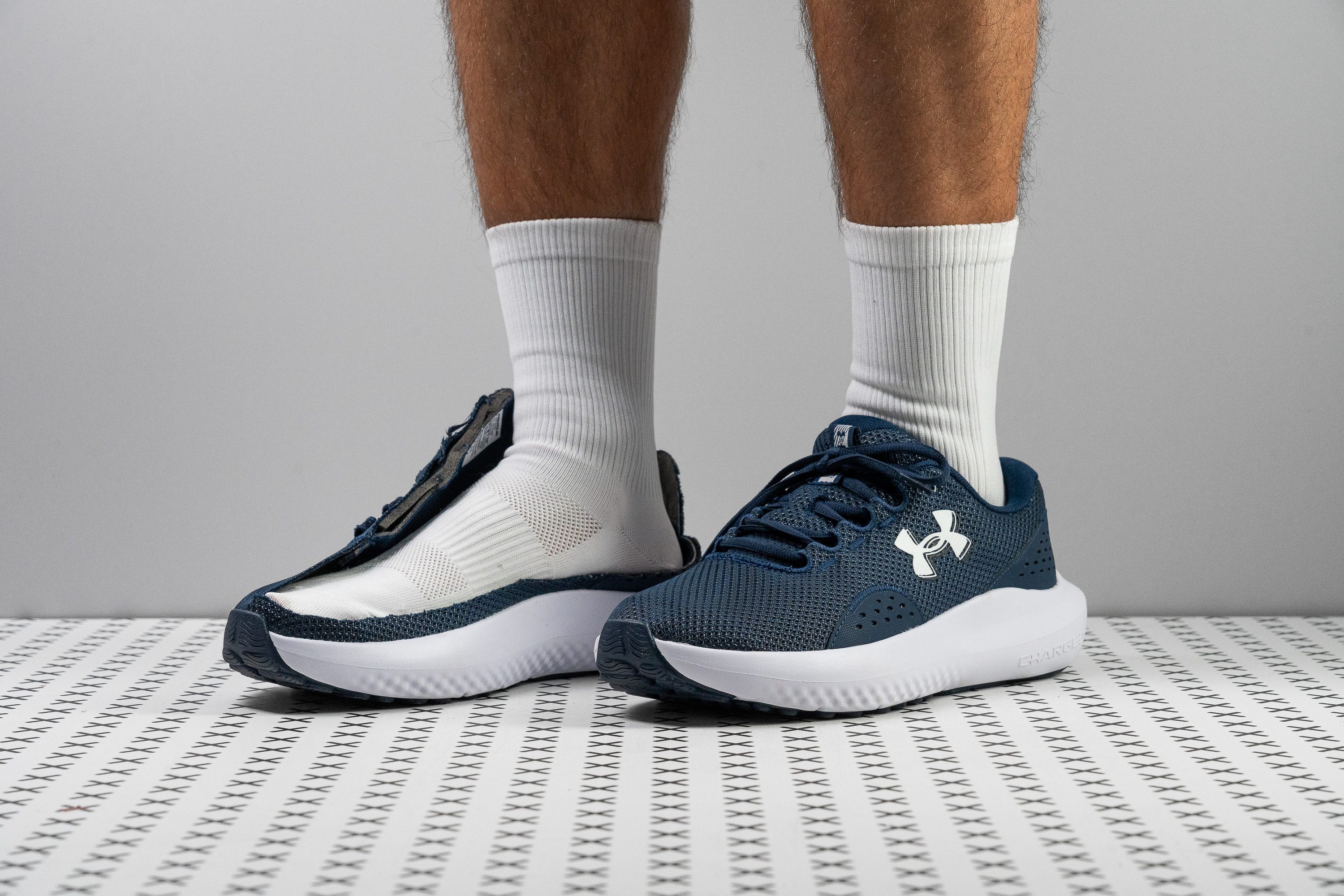Our verdict
- Top pick in best running shoes for Achilles tendonitis
Pros
- Good traction
- Very affordable price
- Stable and secure ride
- Ideal for heel strikers
- Comfortable heel and tongue
- Suitable for daily wear
- Pressure-free lacing system
- Durable outsole
Cons
- Very low energy return
- Weak shock absorption
- Not for serious running
- Firm feel underfoot
Audience verdict
Comparison
The most similar running shoes compared
+ + Add a shoe | |||||
|---|---|---|---|---|---|
| Audience score | 82 Good! | 84 Good! | 83 Good! | 81 Good! | |
| Price | $65 | $80 | $75 | $75 | |
| Pace | Daily running | Daily running | Daily running | Daily running | |
| Shock absorption | Moderate | Moderate | Moderate | Low | |
| Energy return | Low | Low | Low | Low | |
| Traction | High | Moderate | Moderate | Moderate | |
| Arch support | Neutral | Neutral | Neutral | Neutral | |
| Weight lab Weight brand | 10.4 oz / 295g 10 oz / 284g | 10.4 oz / 295g 11.4 oz / 323g | 10.4 oz / 295g 10.8 oz / 306g | 10.5 oz / 298g 9.9 oz / 280g | |
| Drop lab Drop brand | 9.0 mm 8.0 mm | 9.5 mm 10.0 mm | 8.5 mm 5.0 mm | 9.4 mm 10.0 mm | |
| Strike pattern | HeelMid/forefoot | HeelMid/forefoot | HeelMid/forefoot | HeelMid/forefoot | |
| Size | Slightly small | True to size | True to size | Slightly small | |
| Midsole softness | Balanced | Balanced | Balanced | Firm | |
| Difference in midsole softness in cold | Small | Normal | Big | Small | |
| Toebox durability | Decent | Good | Decent | Bad | |
| Heel padding durability | Decent | Good | Good | Bad | |
| Outsole durability | Good | Decent | Good | - | |
| Breathability | Moderate | Moderate | Moderate | Moderate | |
| Width / fit | Wide | Medium | Medium | Medium | |
| Toebox width | Medium | Medium | Medium | Medium | |
| Stiffness | Moderate | Moderate | Moderate | Moderate | |
| Torsional rigidity | Stiff | Moderate | Stiff | Moderate | |
| Heel counter stiffness | Moderate | Moderate | Stiff | Moderate | |
| Heel lab Heel brand | 33.5 mm | 34.3 mm 35.0 mm | 33.5 mm 29.0 mm | 32.0 mm | |
| Forefoot lab Forefoot brand | 24.5 mm | 24.8 mm 25.0 mm | 25.0 mm 24.0 mm | 22.6 mm | |
| Widths available | NormalWideX-Wide | Normal | Normal | NormalWideX-Wide | |
| Orthotic friendly | ✓ | ✓ | ✓ | ✓ | |
| Season | All seasons | All seasons | All seasons | All seasons | |
| Removable insole | ✓ | ✓ | ✓ | ✓ | |
| Ranking | #281 Bottom 24% | #238 Bottom 35% | #273 Bottom 26% | #287 Bottom 22% | |
| Popularity | #250 Bottom 32% | #234 Bottom 36% | #179 Top 49% | #107 Top 29% |
Who should buy
The Under Armour Surge 4 can be a solid choice for:
- Casual runners on a budget seeking a stable daily trainer for easy runs or jogs.
- Runners who prefer firm cushioning, focus on shorter distances, and want maximum savings.
- Heel strikers looking for a cheap shoe with a thick outsole for extra durability.
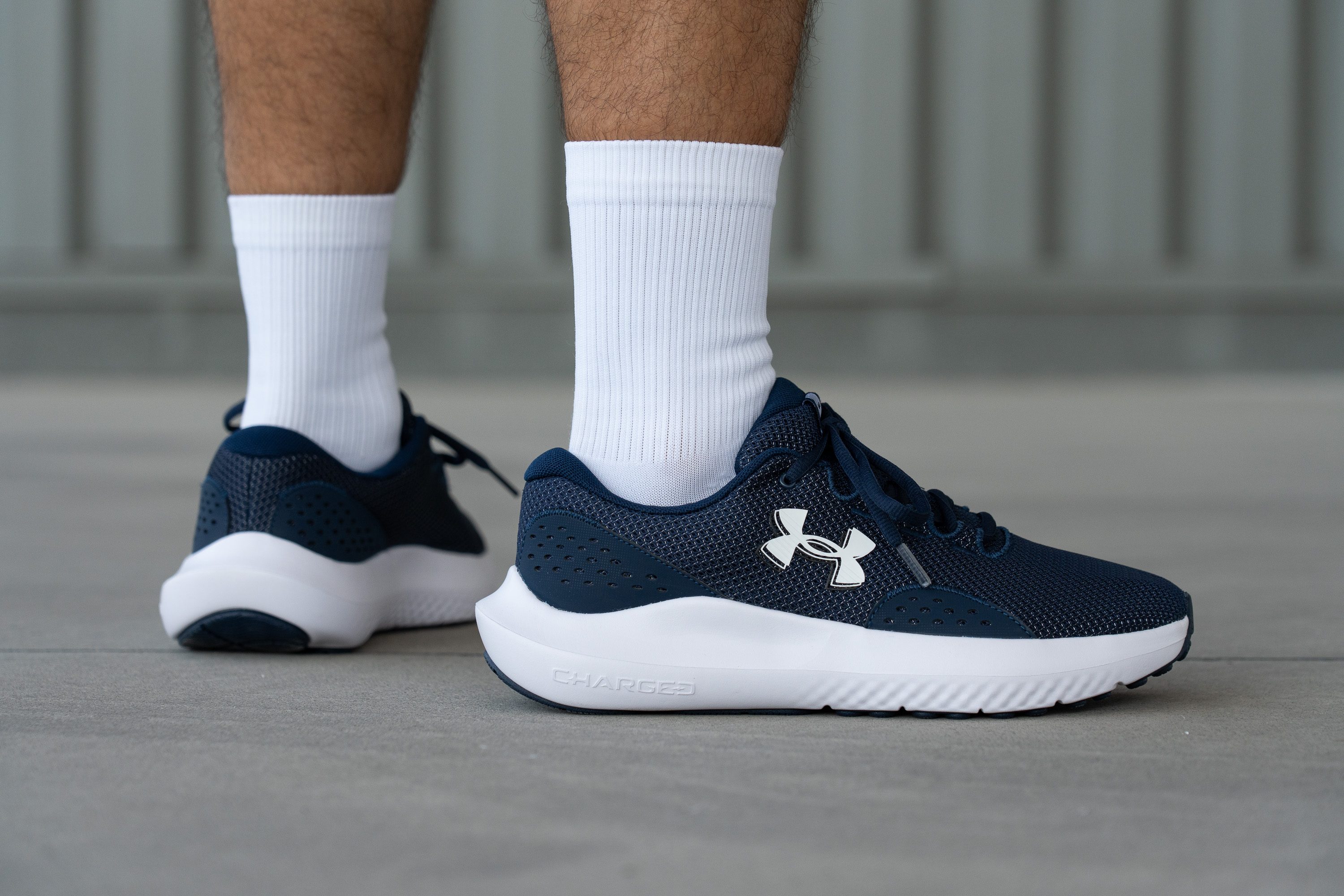
Who should NOT buy
We believe the Surge 4 is not the best choice if you want decent performance in energy return or shock absorption. After lab testing, we found both categories fell really short, ranking among the weakest we’ve measured. For a budget-friendly alternative with better bounce, we suggest the Nike Downshifter 12.
We also think the Surge 4 feels overly firm underfoot, which can be uncomfortable for many runners. If you prefer a softer and more forgiving ride but still want an affordable shoe, we recommend the New Balance Fresh Foam Arishi v4 or the Brooks Revel 7. However, don't expect a plush feel—that's impossible at a super-low price point.
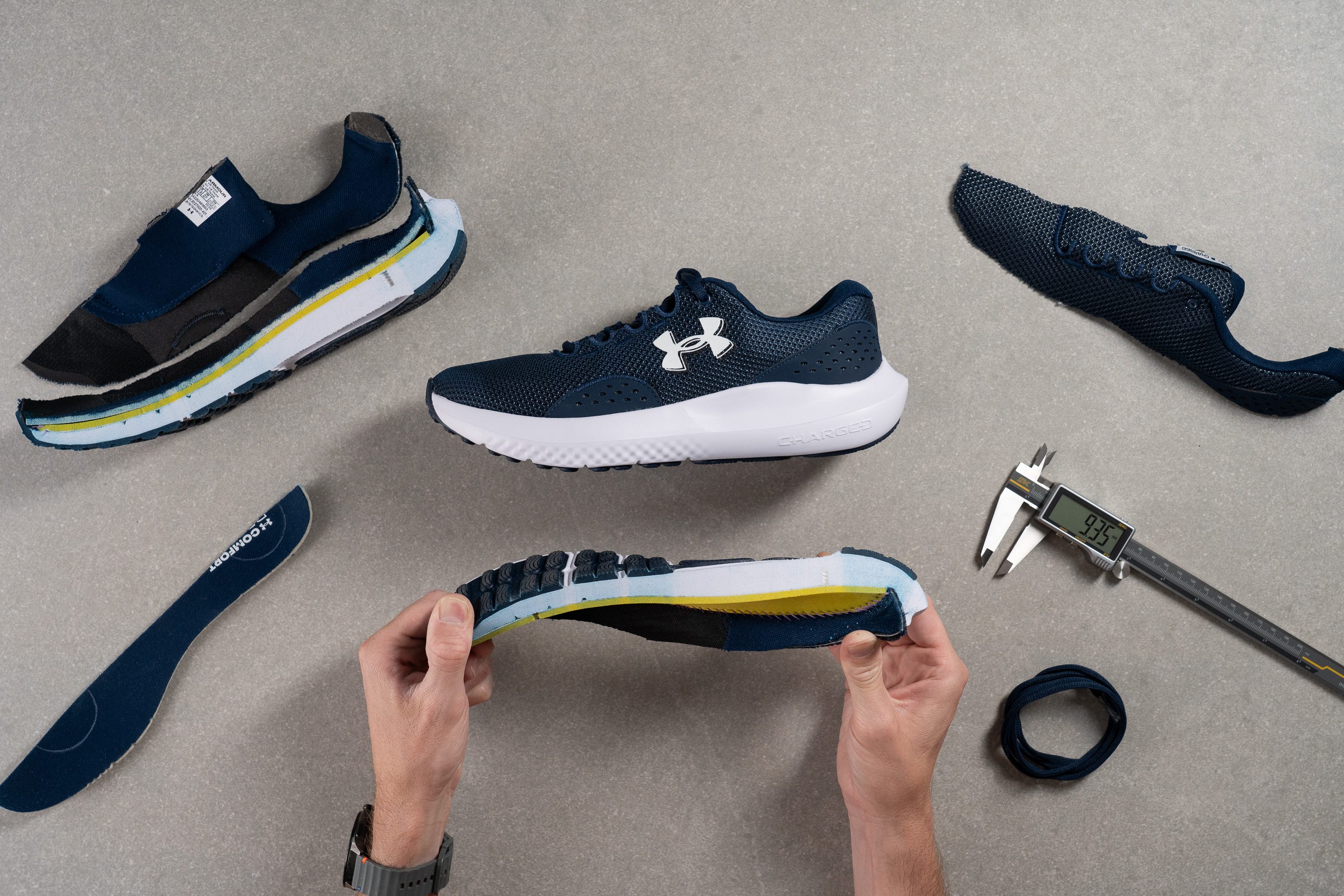
Cushioning
Shock absorption
Shock absorption is well below average at 114 SA in the heel and 84 SA in the forefoot, which isn’t surprising given the low price, the basic foam compound, and the moderate stack height.
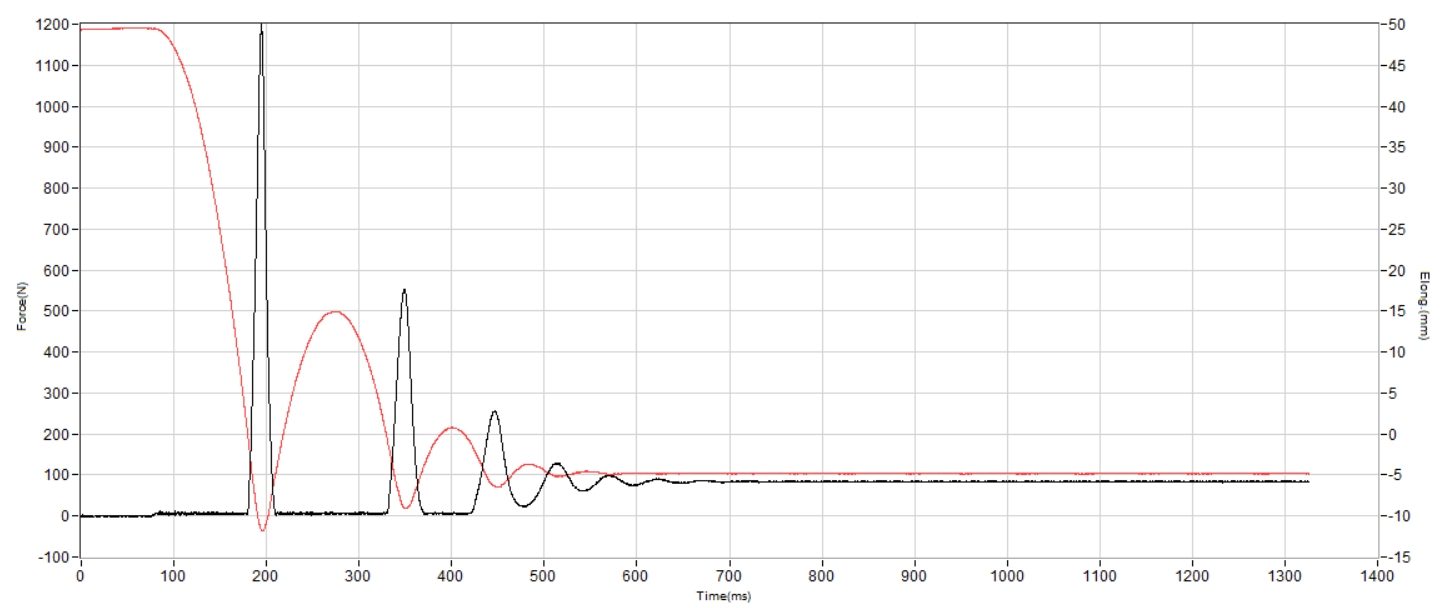
| Surge 4 | 114 SA |
| Average | 129 SA |
Energy return
At the time of this review (we can’t predict the future yet), the Surge 4 ranks among the three shoes with the lowest energy return we tested... and we’ve tested hundreds! It scored only 42.4% in the heel and a shockingly flat 39.2% in the forefoot.
This has a crystal-clear message: if you enjoy even a hint of bounce in your running shoes, this one delivers the opposite feel.
| Surge 4 | 42.4% |
| Average | 58.5% |
Heel stack
The stack height isn’t low at all, despite what the shock absorption results might suggest. At 33.5 mm, it’s close to the average and offers a solid layer of foam underfoot.
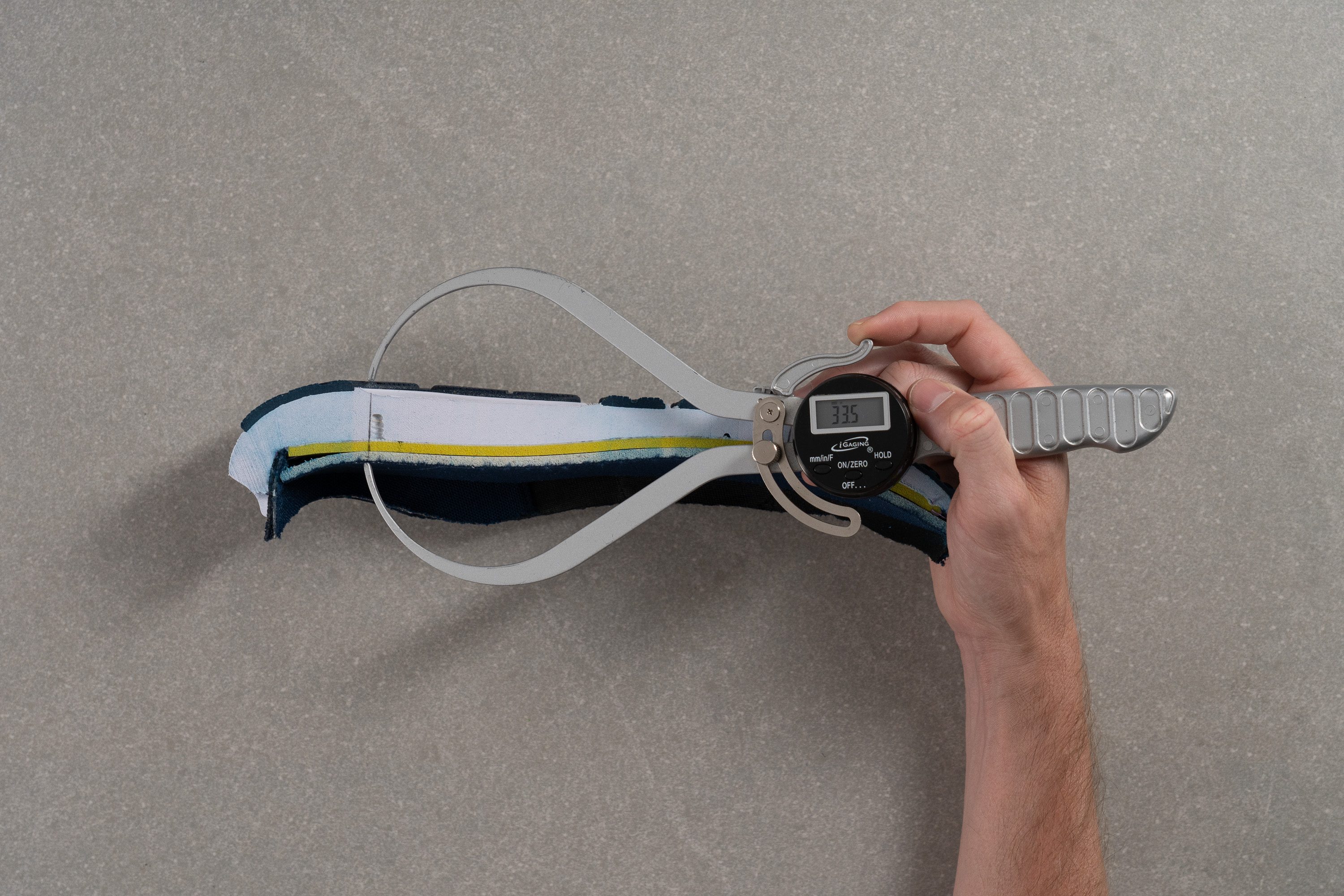
| Surge 4 | 33.5 mm |
| Average | 34.8 mm |
Forefoot stack
The forefoot follows the same trend, with 24.5 mm of stack height, slightly below today’s average. The shoe feels pretty normal in this regard.
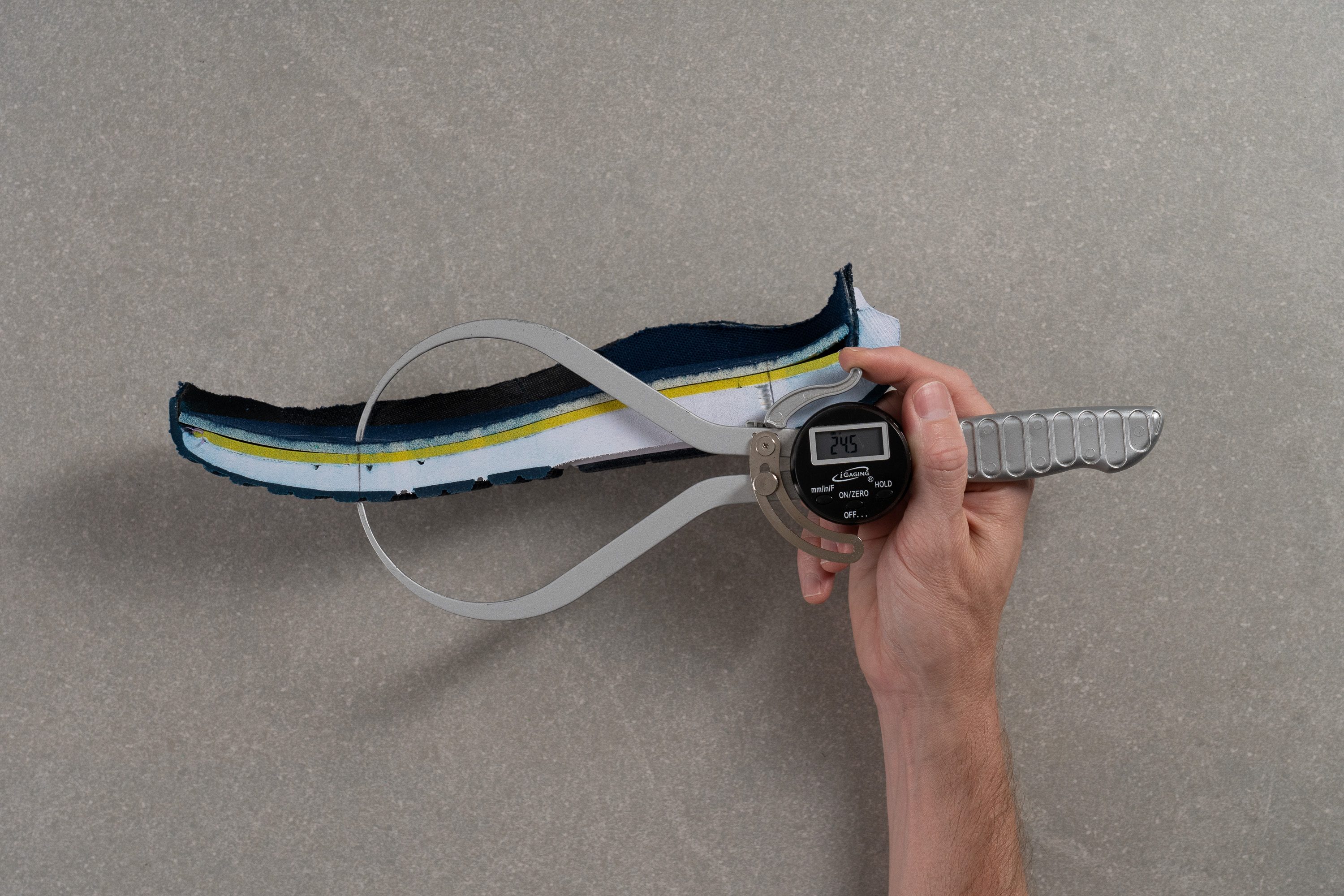
| Surge 4 | 24.5 mm |
| Average | 26.2 mm |
Drop
We measured an actual heel-to-toe drop of 9.0 mm, which works great for heel strikers but is still usable for nearly any footstrike. This isn’t surprising, as most budget shoes favor higher-drop designs.
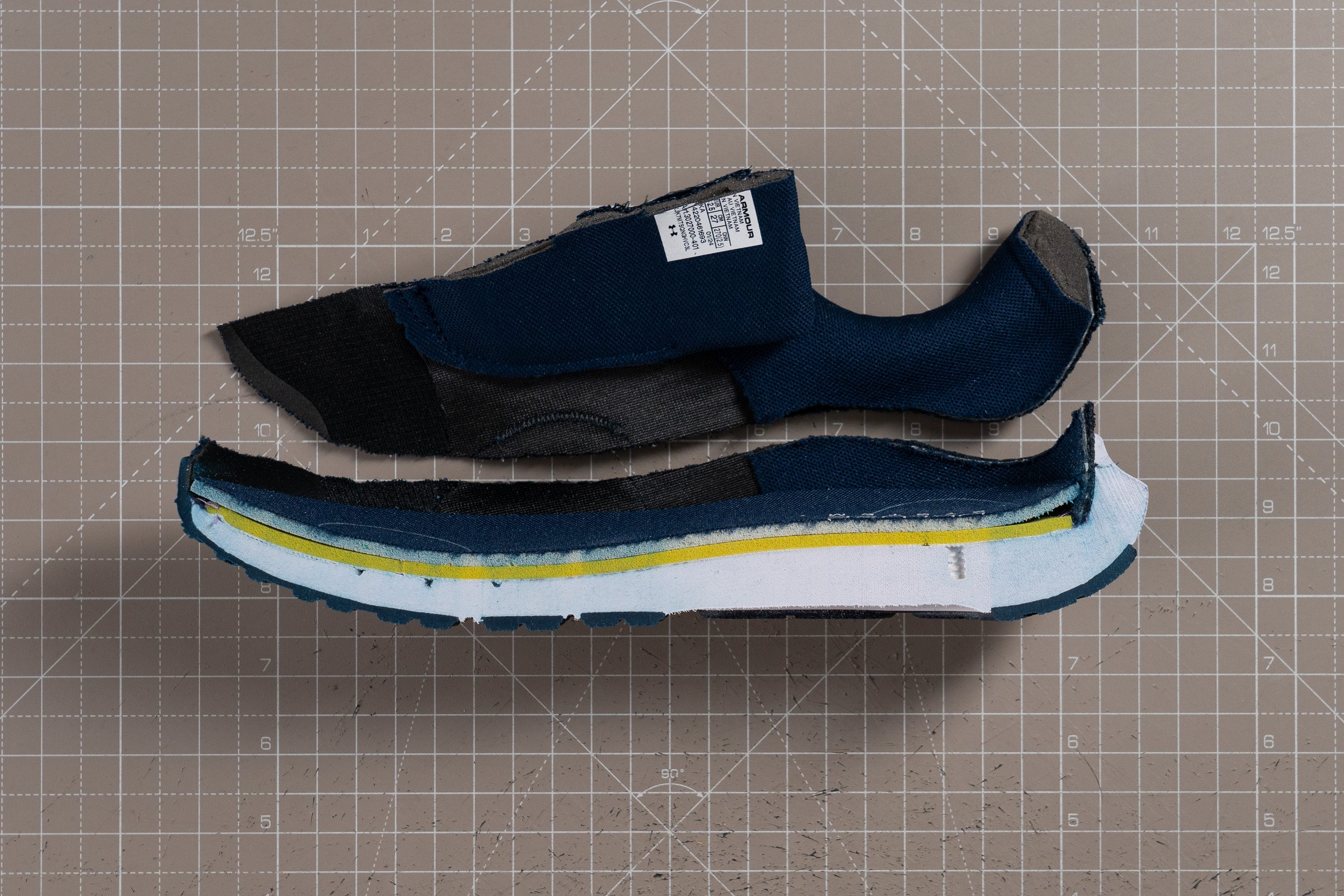
| Surge 4 | 9.0 mm |
| Average | 8.6 mm |
Midsole softness
When we tested the Surge 4 on our runs, we instantly discovered a firm feel underfoot that's even more noticeable by today’s softer-foam trend.
Our lab confirmed this sensation with a 26.0 HA reading. Still, firmer midsoles can be useful for beginners or casual runners who want a simple option with a stable, no-nonsense ride.
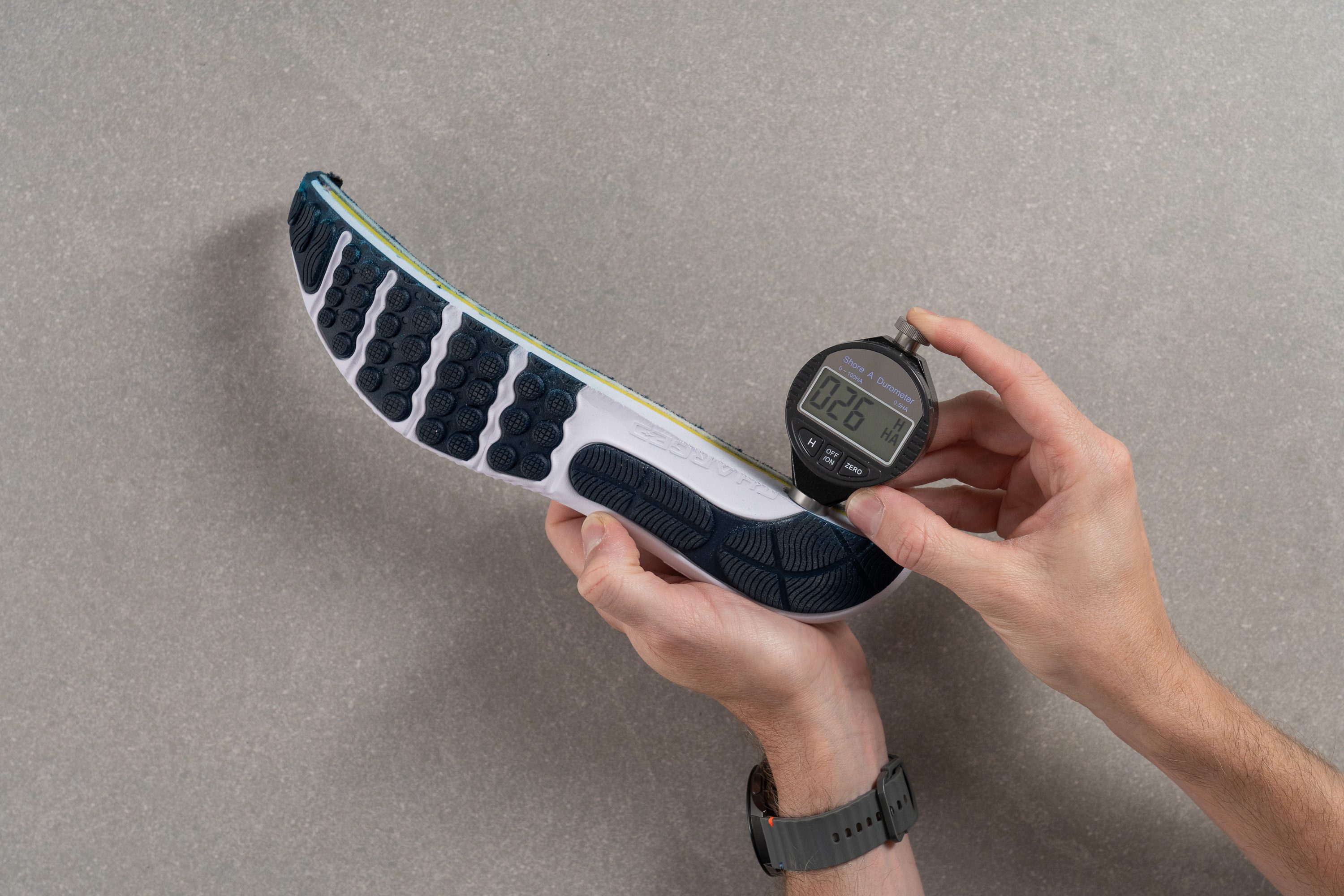
| Surge 4 | 26.0 HA |
| Average | 20.4 HA |
Rocker
The rocker design of the Surge 4 leans more toward heel strikers, as its curvature clearly favors rearfoot landings. The forefoot rocker is also very mild, something we usually see in budget-friendly shoes.
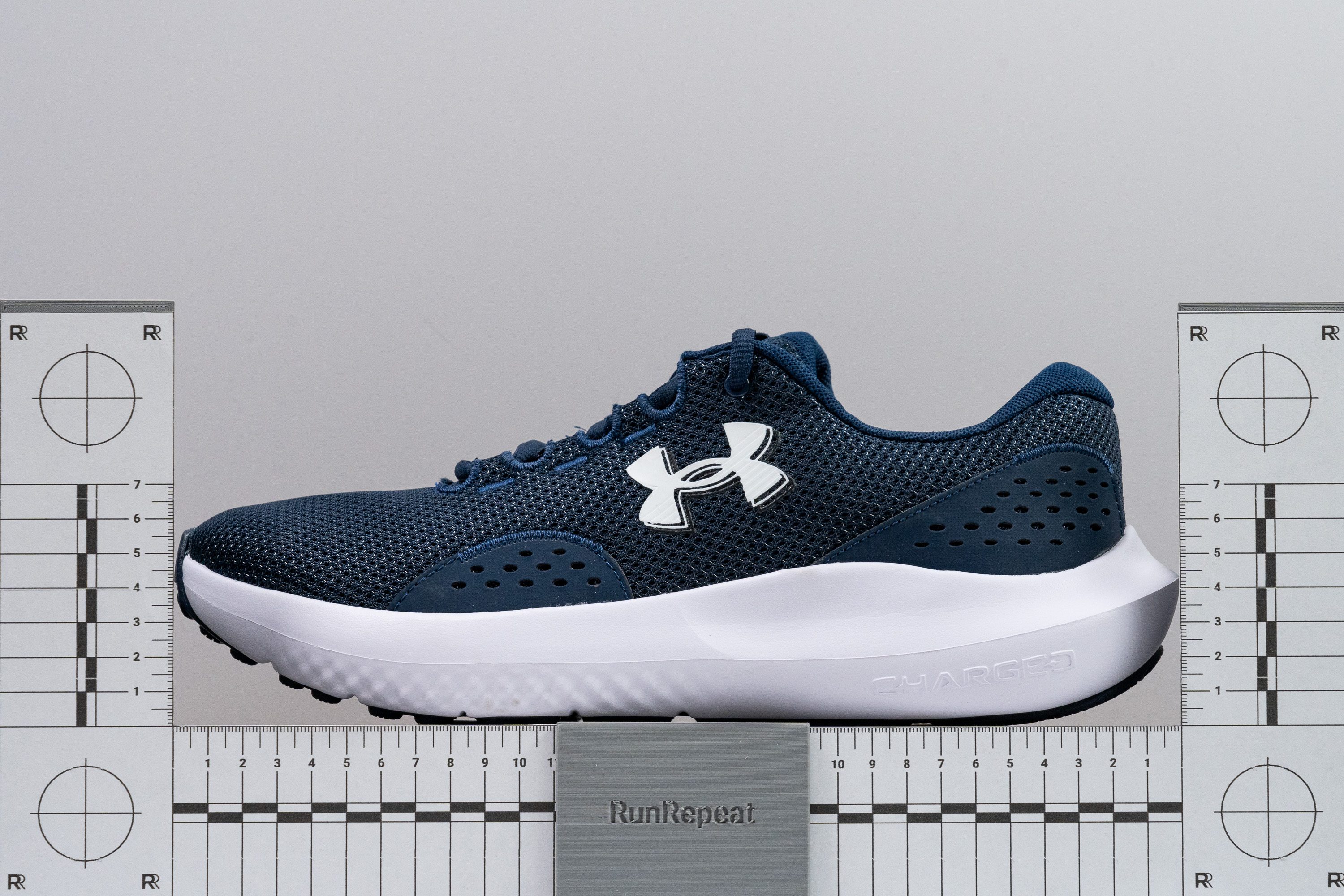
Size and fit
Size
Under Armour Surge 4 fits slightly small (10 votes).
Width / Fit
We made a gel mold of the Surge 4’s interior to analyze its shape.
Our measurement of the upper’s widest section came to 98.5 mm, ranking it among the widest daily trainers in its category.
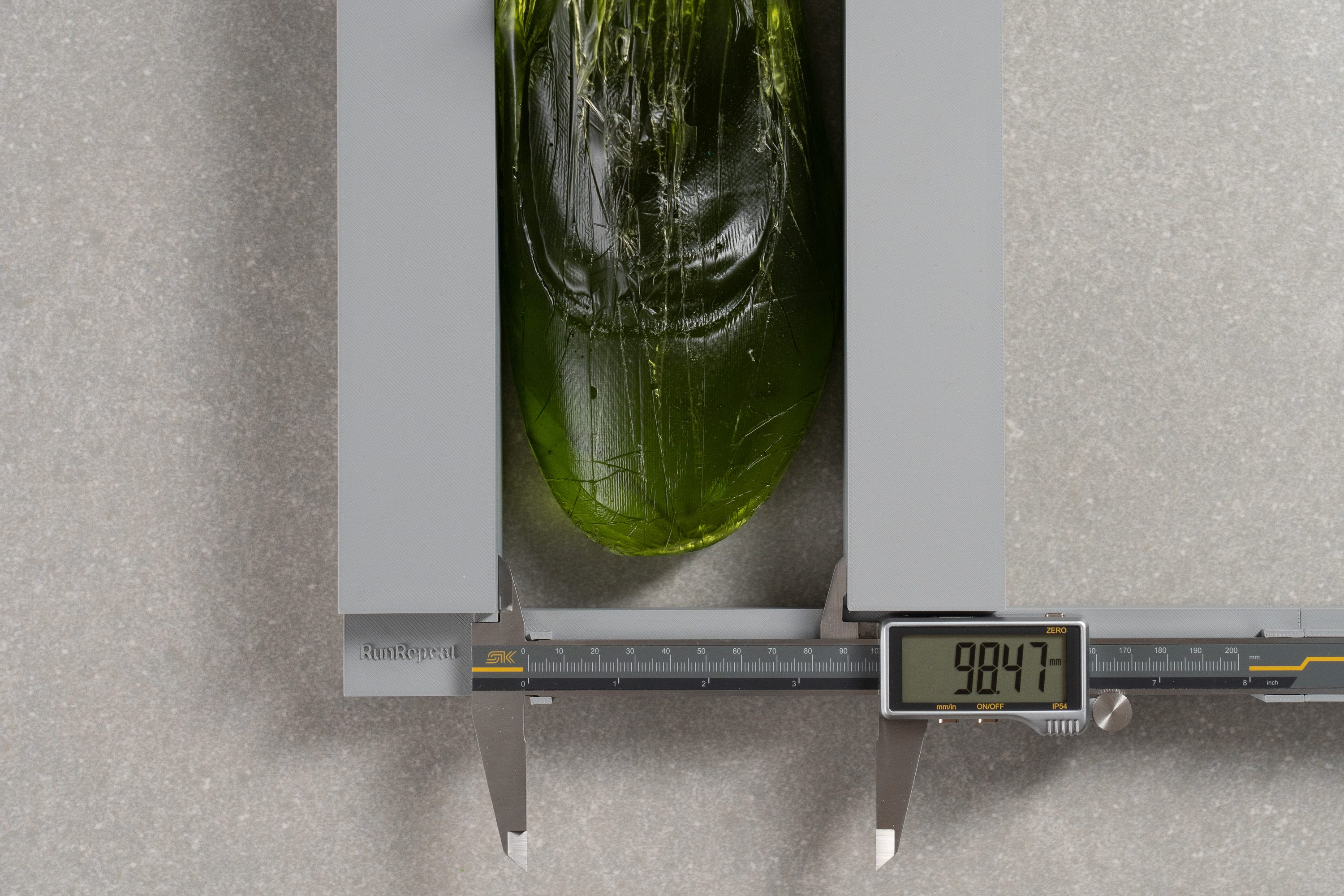
| Surge 4 | 98.5 mm |
| Average | 95.1 mm |
Toebox width
In contrast, the toebox narrows to a more average 73.2 mm. This classic taper limits space, though it’s worth noting that UA offers a wide version in some markets, which helps considerably.
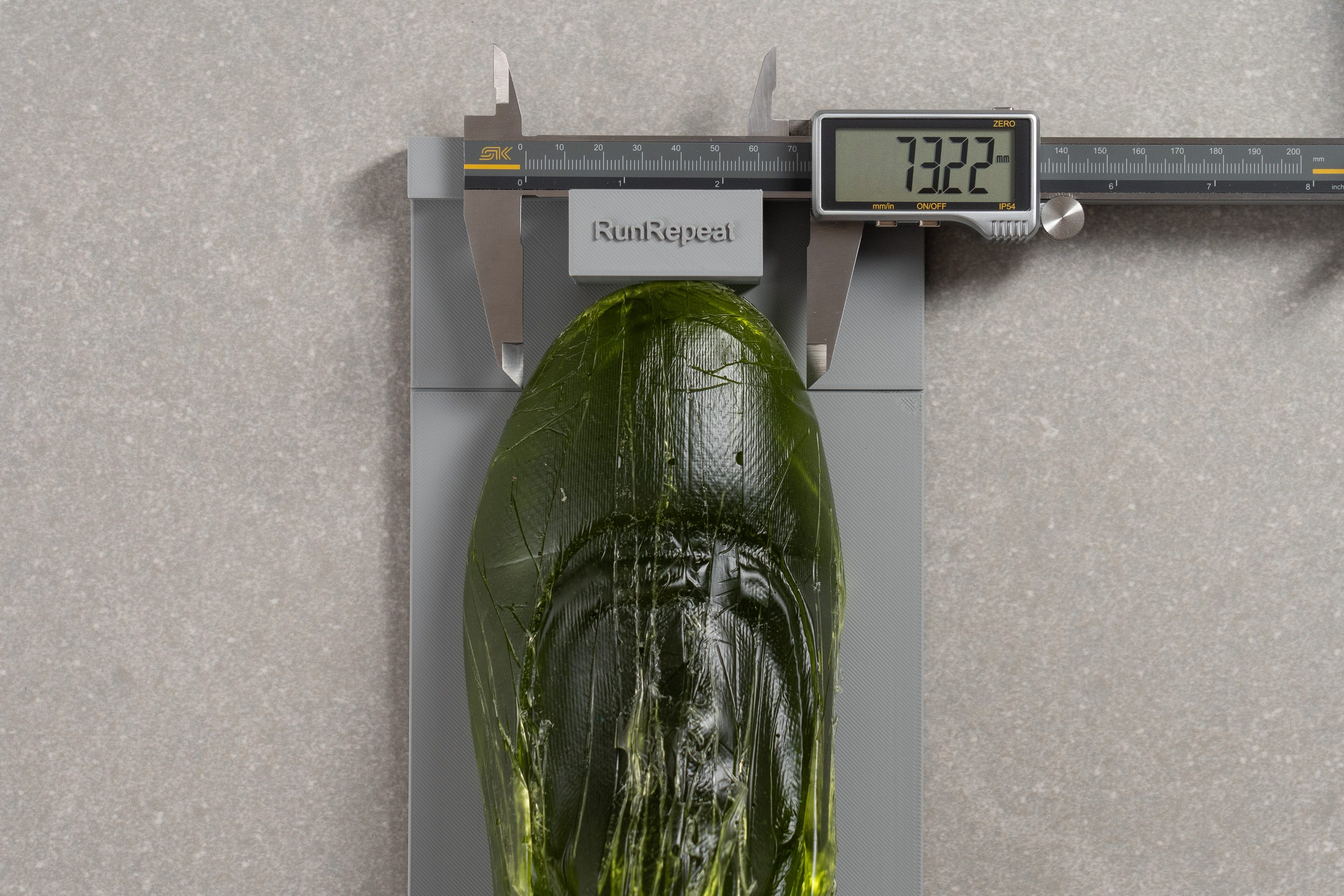
| Surge 4 | 73.2 mm |
| Average | 73.3 mm |
Toebox height
While the Surge 4 provides solid width, its vertical space is another matter.
Measuring 24.5 mm, we found it to be a low-volume design, so runners with higher-volume feet may need to be cautious here.
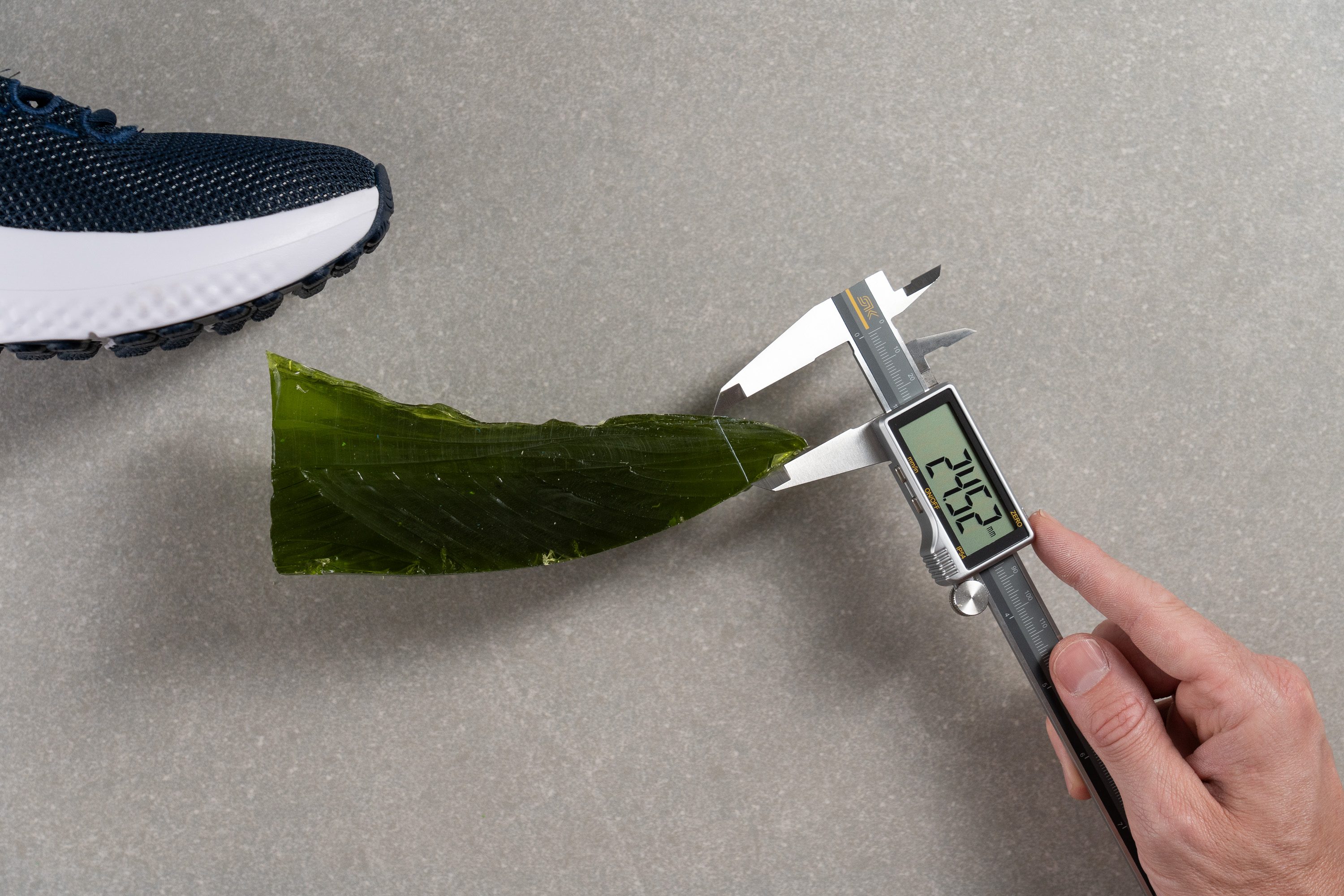
| Surge 4 | 24.5 mm |
| Average | 27.1 mm |
Traction / Grip
Traction test
One of the strongest features we discovered in the Surge 4 is traction. With a 0.53 score in our demanding wet test over concrete, it shows a confidence-boosting grip that even outperforms many shoes costing 3x more!
| Surge 4 | 0.53 |
| Average | 0.48 |
Outsole design
The outsole of the Surge 4 features broad rubber coverage with a small section of exposed foam at the center. Large oval and rectangular rubber patches strengthen the heel and midfoot, adding structure where impact is highest.
Up front, the forefoot showcases a combination of rounded-cornered rectangular strips and small circular pods arranged in rows. We believe that this detailed layout feels surprisingly advanced for the shoe’s price, highlighting the outsole as its most refined element.
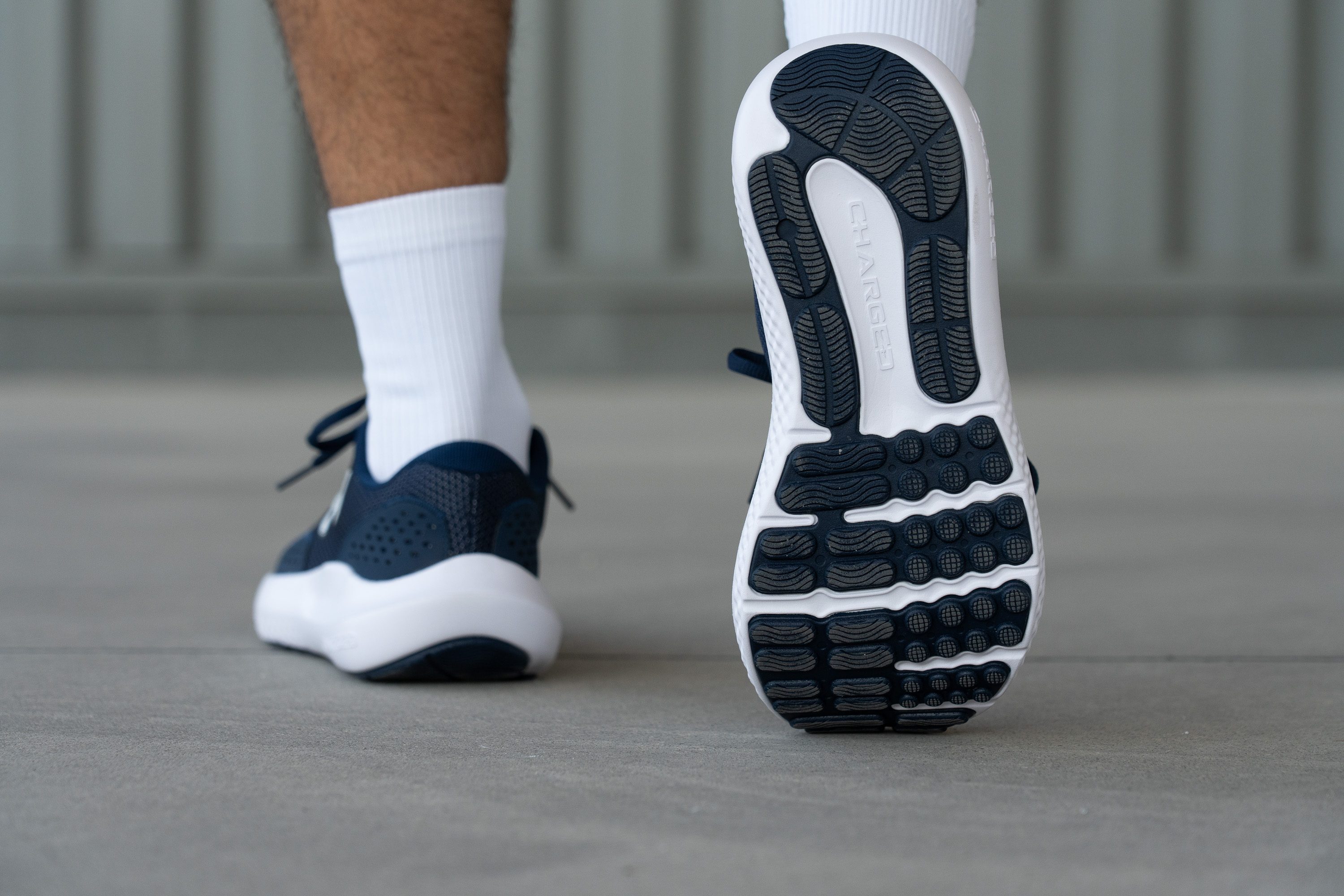
Flexibility / Stiffness
This shoe is not very flexible, as our 30-degree bend test confirmed with a result of 15.4N, landing right around the average.
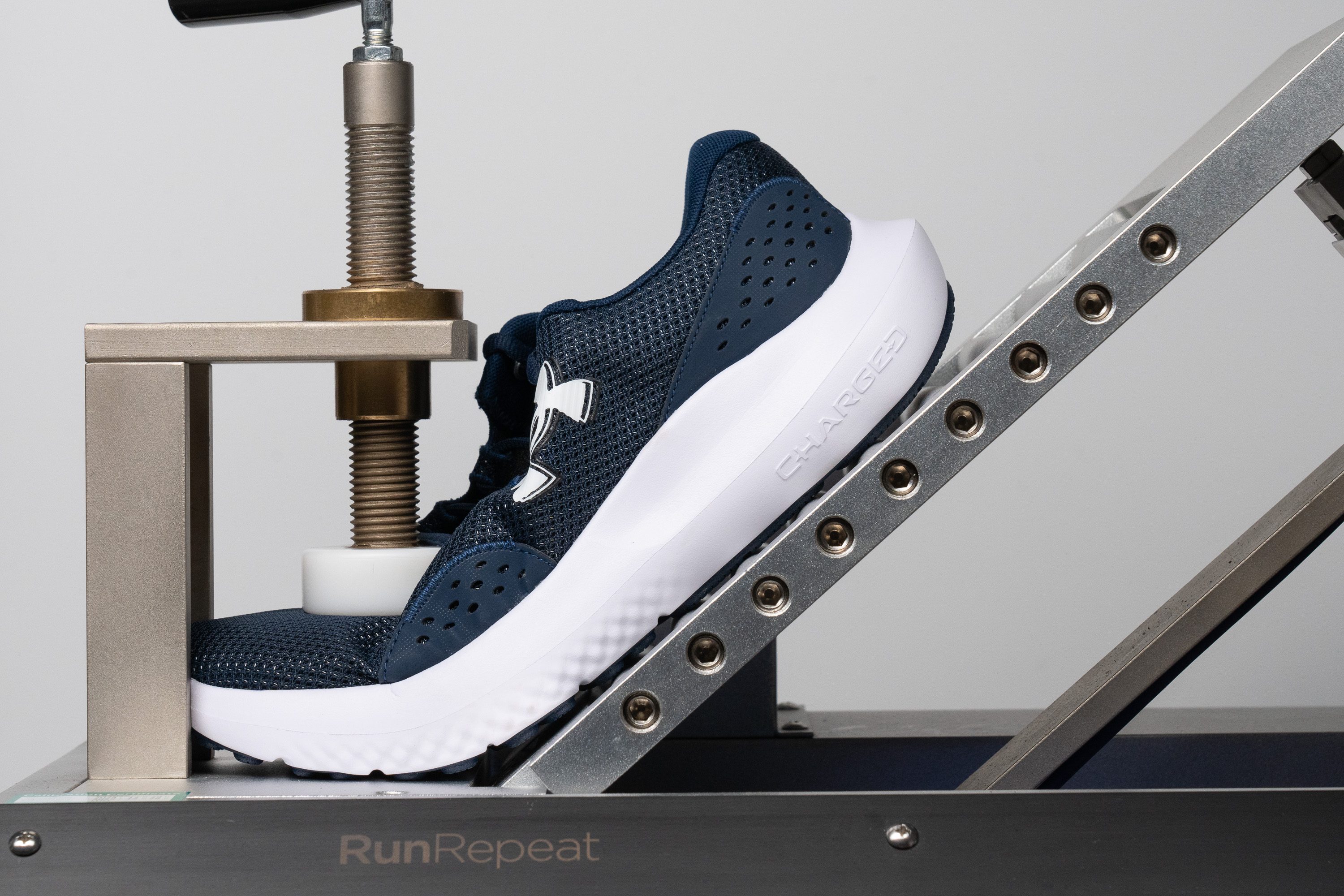
| Surge 4 | 15.4N |
| Average | 15.3N |
Weight
At 10.4 oz (295g), the Surge 4’s weight isn’t too bad, especially given its solid outsole coverage. And honestly, we can’t expect a shoe at this low price to pack multiple advanced features or to be super lightweight.
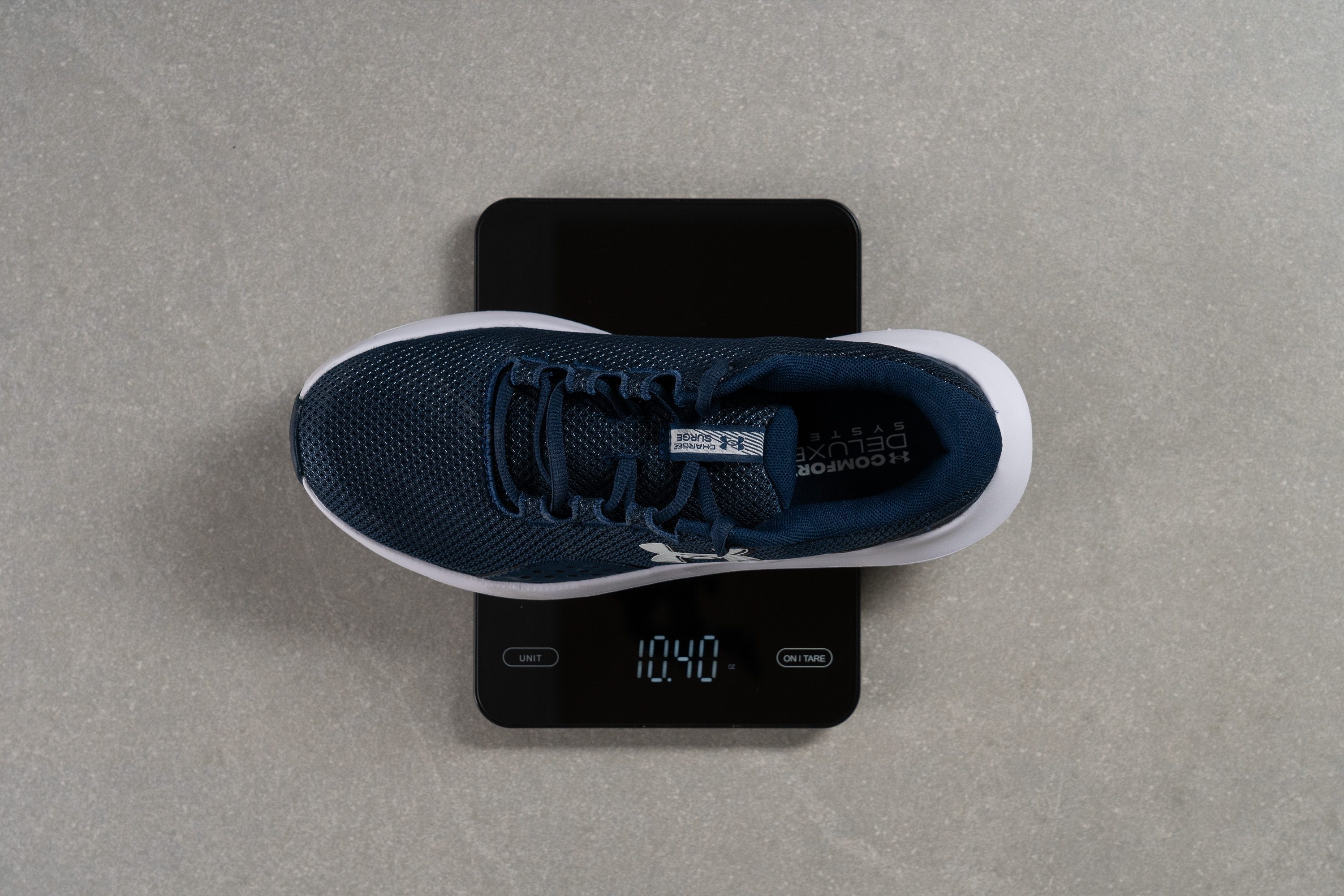
| Surge 4 | 10.4 oz (295g) |
| Average | 9.3 oz (264g) |
Breathability
The step-in feel of the Surge 4 is solid, thanks to generous padding in the heel and tongue. The toebox, however, feels less pleasant and doesn’t look especially airy.
We tested ventilation with our smoke machine and saw moderate airflow. It wasn’t impressive but not poor either, so we rated it 3/5.
The upper relies on synthetic fibers that aren’t particularly plush or gentle.

For this reason, going sockless is out of the question. On the plus side, they add extra lateral stability.
Yet in our view, the decent ventilation and the comfortable heel and tongue padding are right in line with expectations. We just wished the mesh felt a bit softer.
| Surge 4 | 3 |
| Average | 3.7 |
Stability
Lateral stability test
Stability in the Surge 4 is surprisingly good, and we think runners with mild pronation might find it secure underfoot. The lateral TPU heel inserts and wide landing base work together to create a really solid support.
Torsional rigidity
The Surge 4 is fairly stiff, scoring 4/5 in our flexibility test, which clearly adds to the stable ride. However, runners who enjoy a more flexible shoe for daily use may prefer another option.
| Surge 4 | 4 |
| Average | 3.5 |
Heel counter stiffness
Under Armour kept things simple with the Surge 4, giving it a standard heel counter similar to what we see in many daily trainers, even pricier ones. In our test, it earned a 3/5 score.
| Surge 4 | 3 |
| Average | 2.9 |
Midsole width - forefoot
The Surge 4 comes with a standard forefoot shape and width, providing a landing base of 116.3 mm at its widest point.
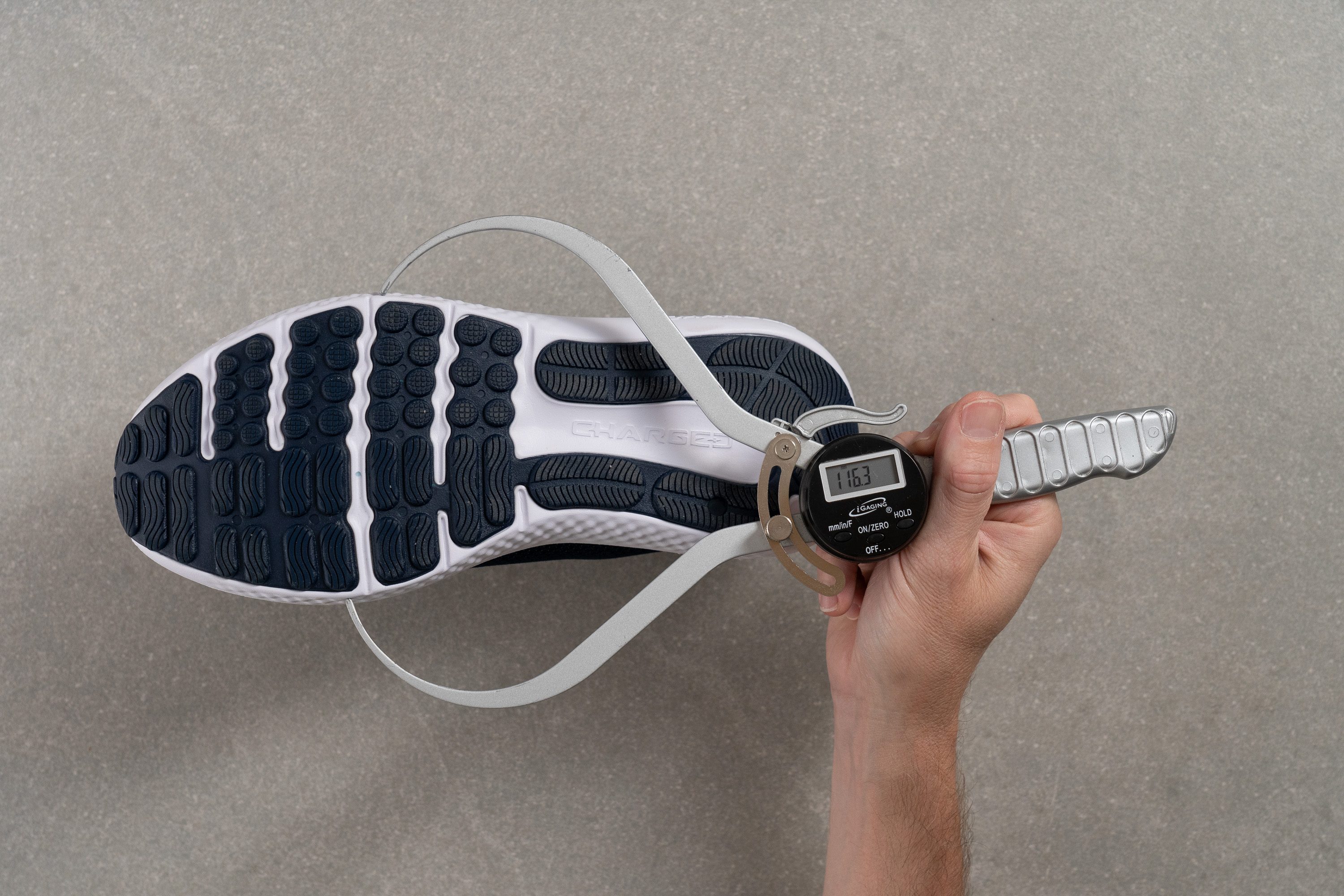
| Surge 4 | 116.3 mm |
| Average | 114.4 mm |
Midsole width - heel
It’s clear to us that the Surge 4 leans more toward heel strikers, which makes sense to us. Budget-friendly shoes are often aimed at beginners, and many in this group land on the rearfoot.
At the same time, this measurement of 94.8 mm reflects a new trend in the market. Entry-level models were once compact, but now we see them adopting wider, stiffer builds as well.
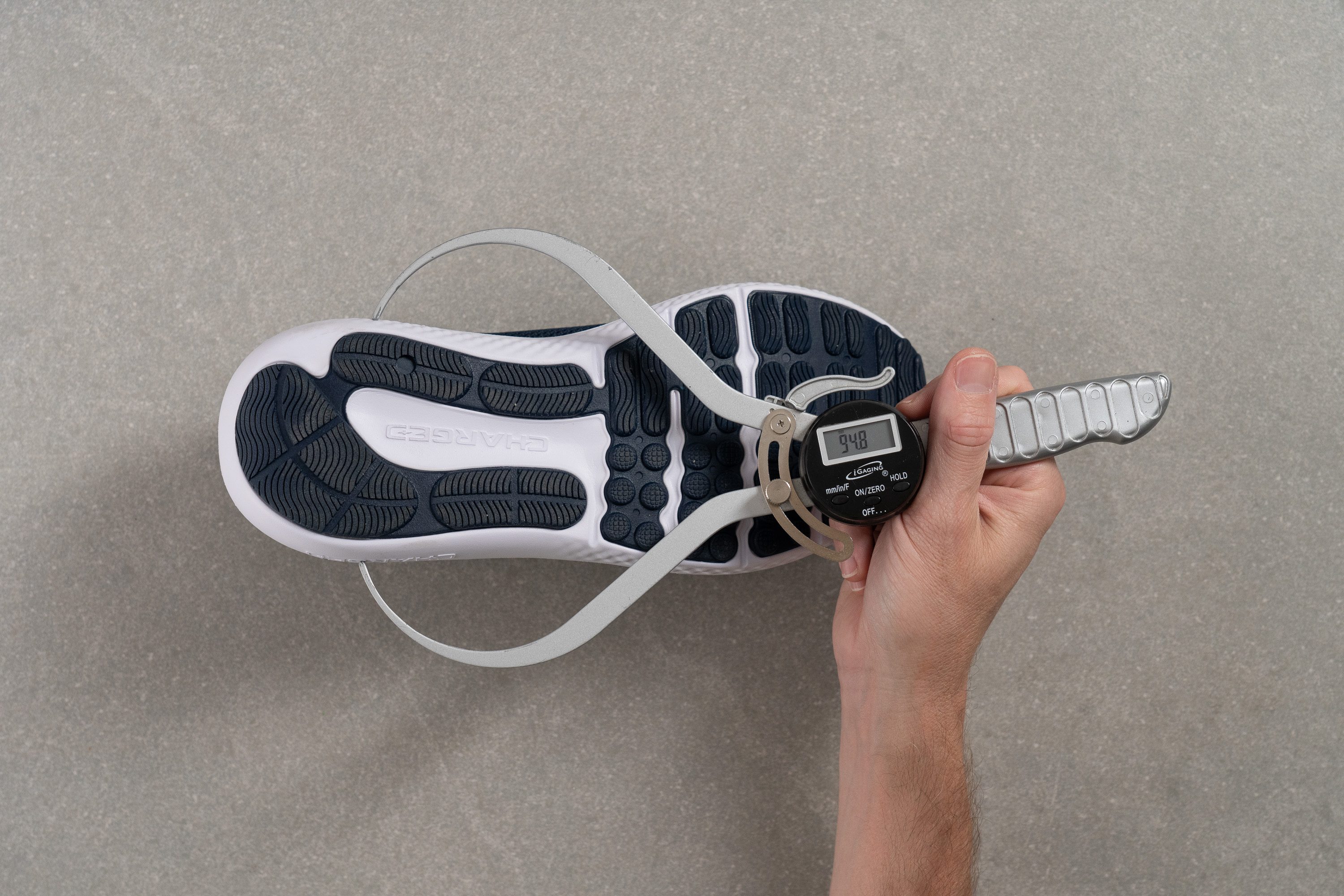
| Surge 4 | 94.8 mm |
| Average | 90.7 mm |
Durability
Toebox durability
Toebox durability isn’t the strongest aspect of the Surge 4, as our 2/5 toebox score shows. It delivers only modest resistance to abrasion, falling short of more durable options. To be honest with you, we expected a better result here.
| Surge 4 | 2 |
| Average | 2.6 |
Heel padding durability
The heel padding also scored below average at 3/5, which isn’t great news. Still, given the shoe’s low price, some trade-offs in quality are expected, and this seems to be one of them.
| Surge 4 | 3 |
| Average | 3.4 |
Outsole durability
If the upper isn’t a major concern, then the Surge 4 holds up well. Its outsole performed solidly in our last Dremel test, showing just 0.9 mm of rubber wear.
| Surge 4 | 0.9 mm |
| Average | 1.1 mm |
Outsole thickness
You know, there's a funny paradox in running shoes: buyers of cheap models often expect more durability than those paying 3x or 4x the price.
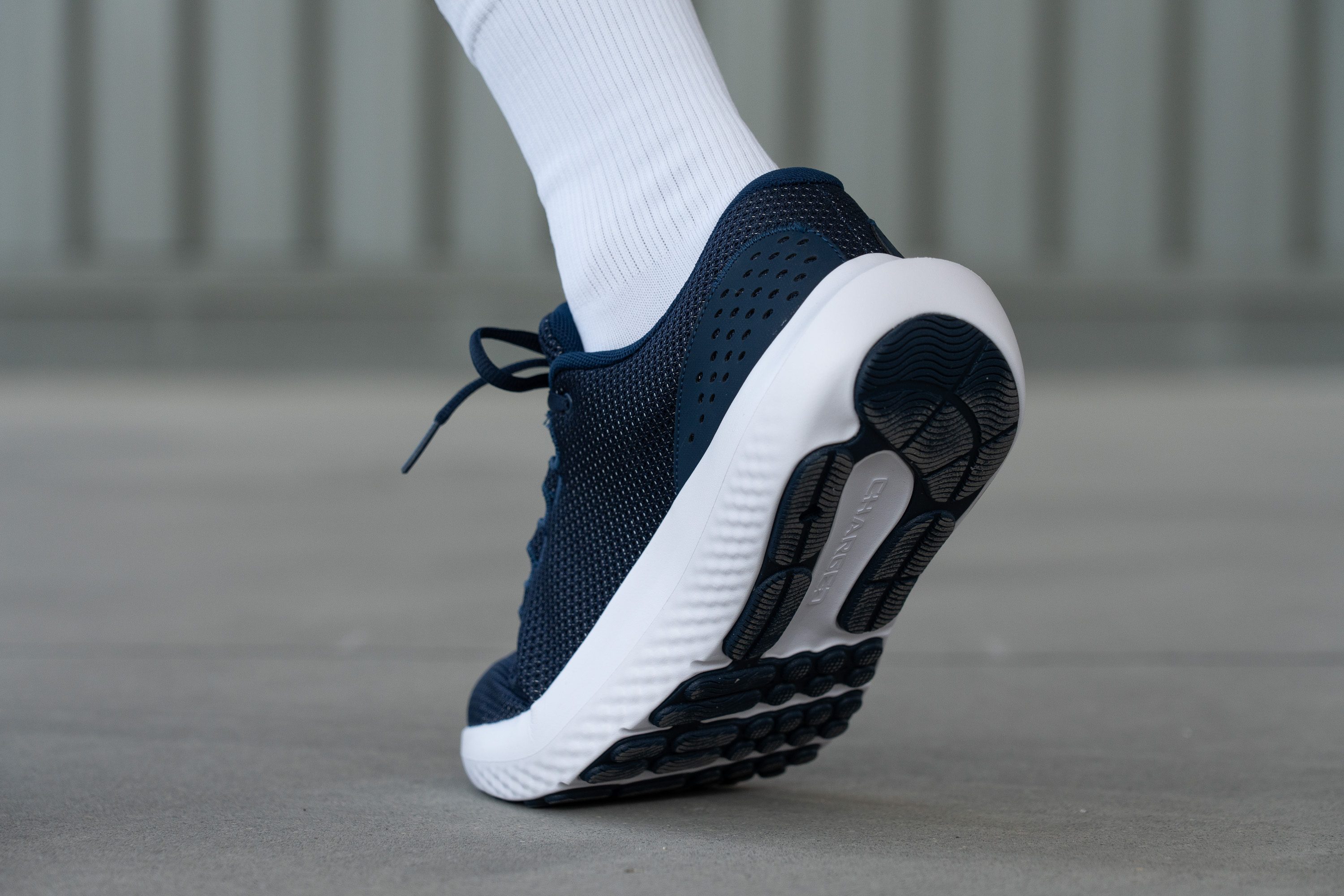
That’s why brands emphasize long-lasting builds in cheap shoes, even if it means more weight. And that’s exactly what we found here, with the Surge 4 showing an extra-durable 4.5 mm outsole.
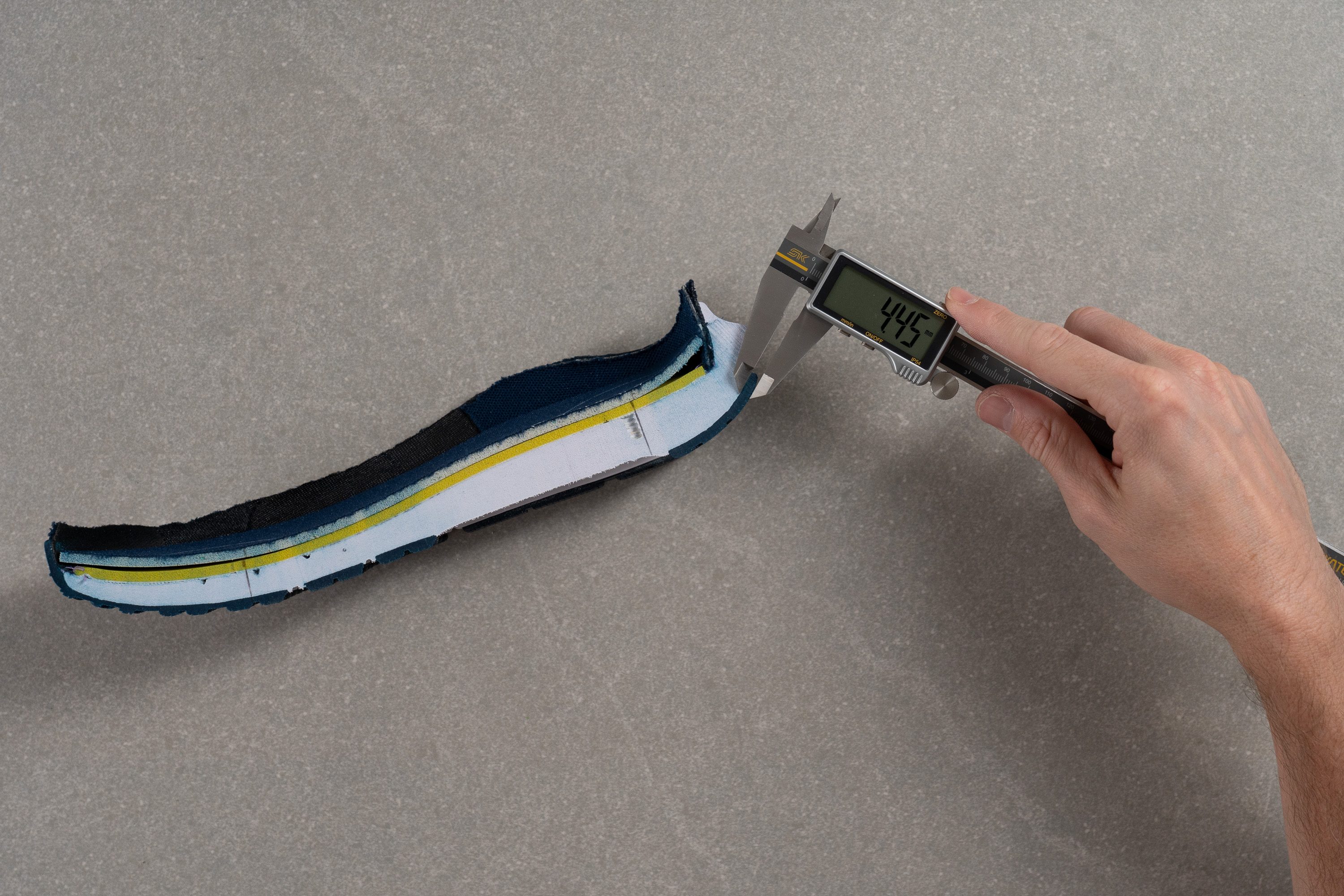
| Surge 4 | 4.5 mm |
| Average | 3.2 mm |
Misc
Insole thickness
The stock insole of the Surge 4 measures 3.9 mm in thickness.
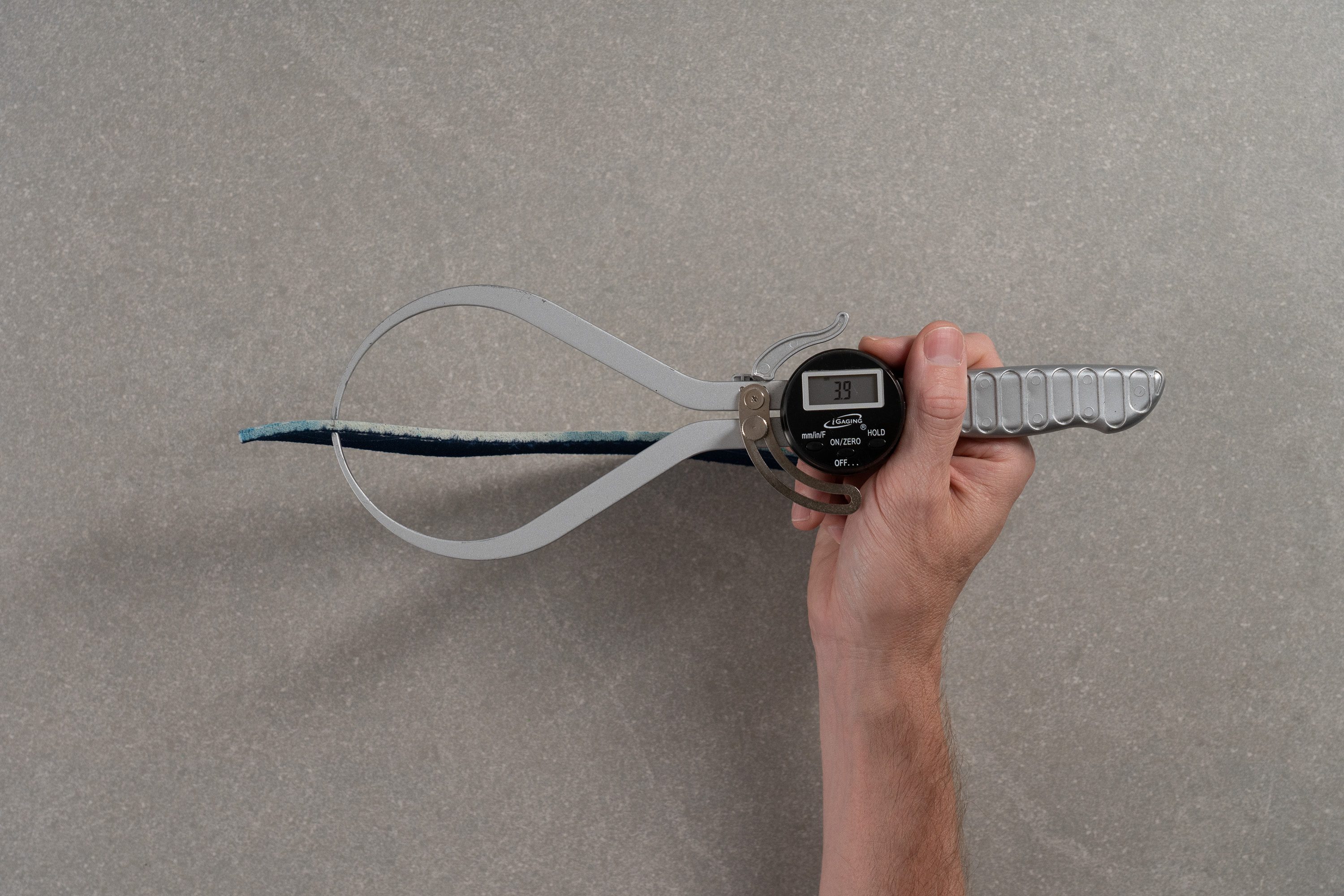
| Surge 4 | 3.9 mm |
| Average | 4.5 mm |
Removable insole
The insole of the Surge 4 is removable, allowing you to swap in a thicker, more cushioned option or even custom orthotics. As for the “Comfort Deluxe System” name... let’s just say it feels a bit exaggerated.
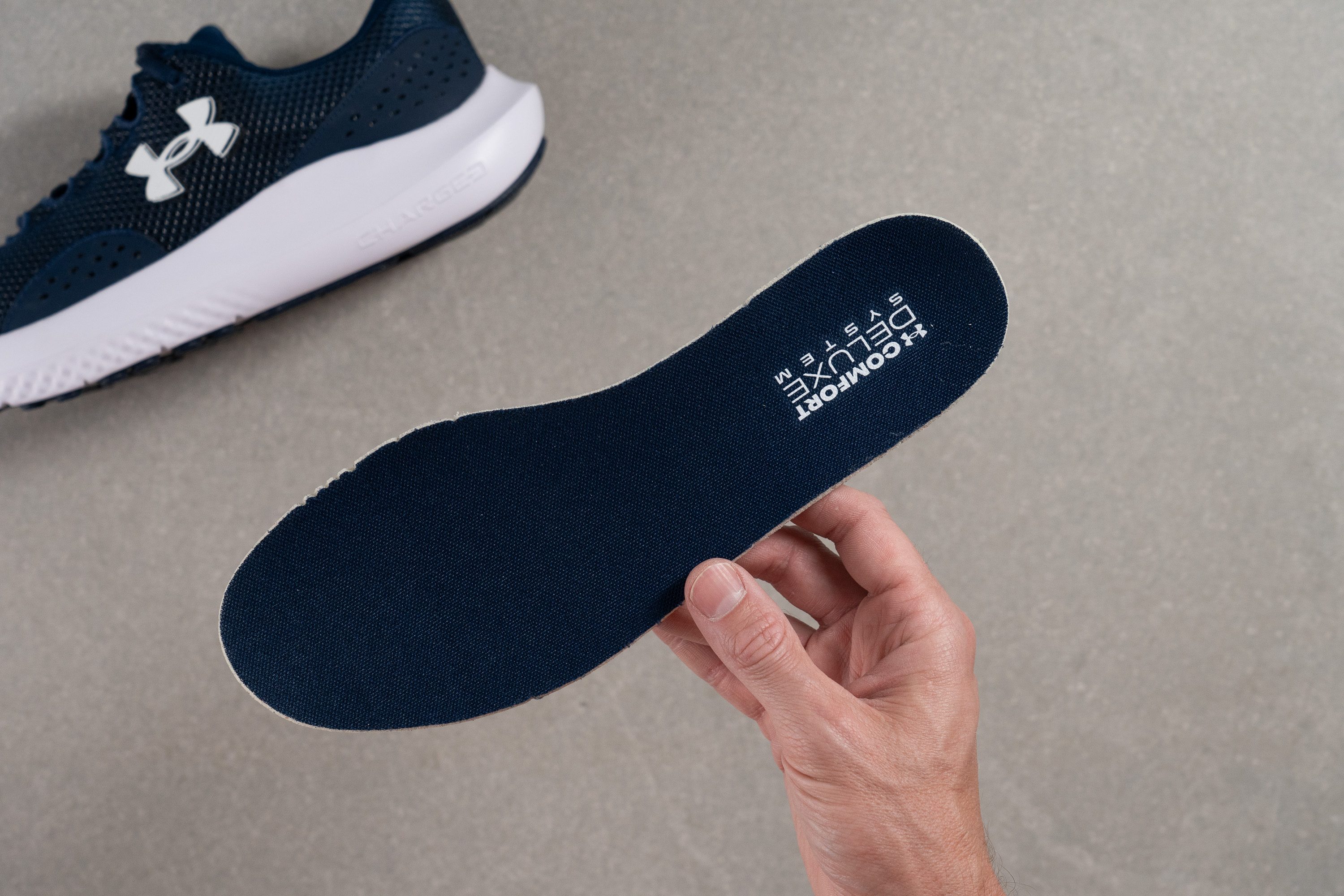
| Surge 4 | Yes |
Midsole softness in cold (%)
The EVA midsole of the Surge 4 became only 12% firmer after 20 minutes in our freezer. That's a pleasantly unexpected result that helps maintain consistent performance year-round.
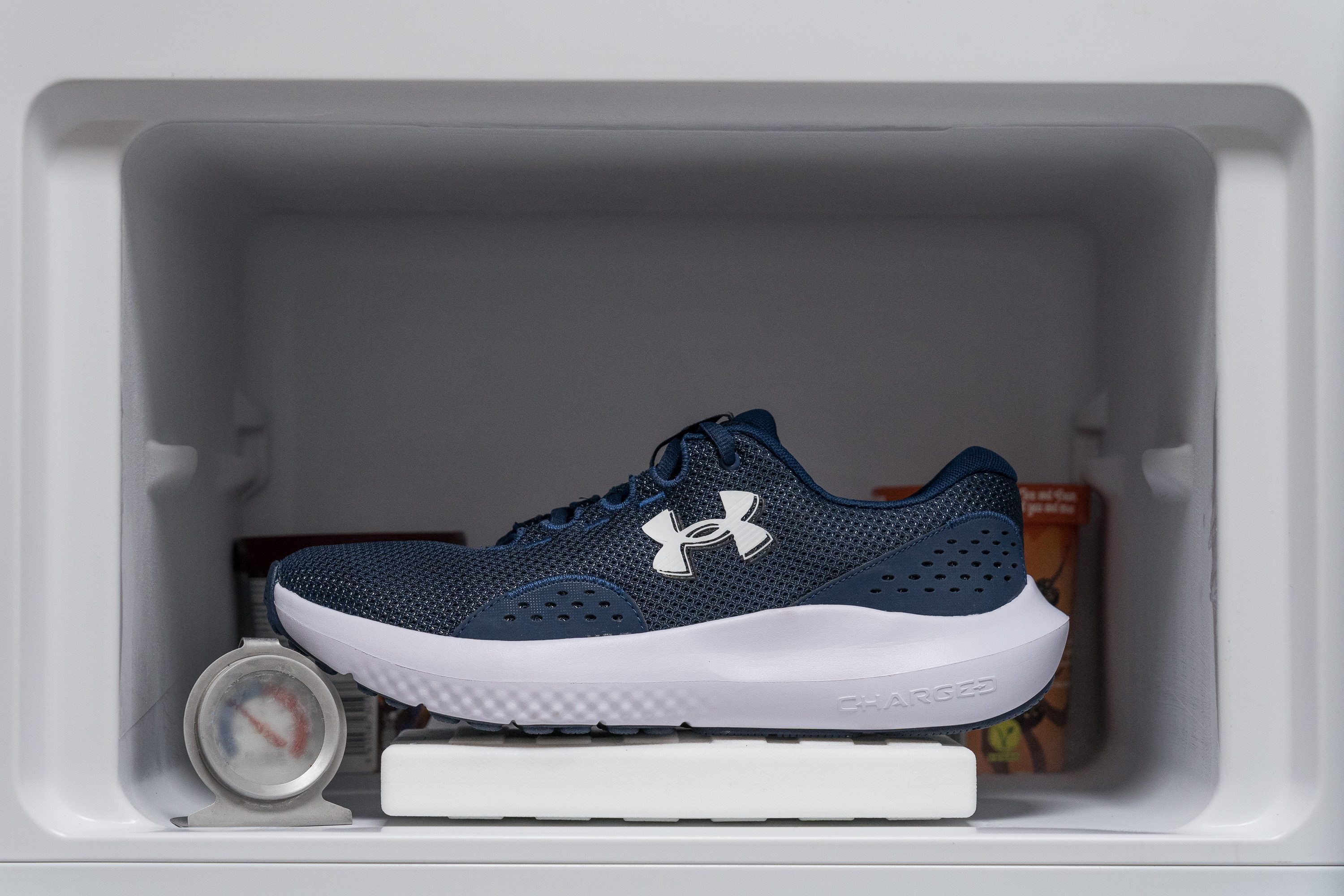
| Surge 4 | 12% |
| Average | 24% |
Reflective elements
The Surge 4 has no reflective elements, so night runners may find this a bit of an issue and should rely on hi-vis clothing or accessories for visibility.
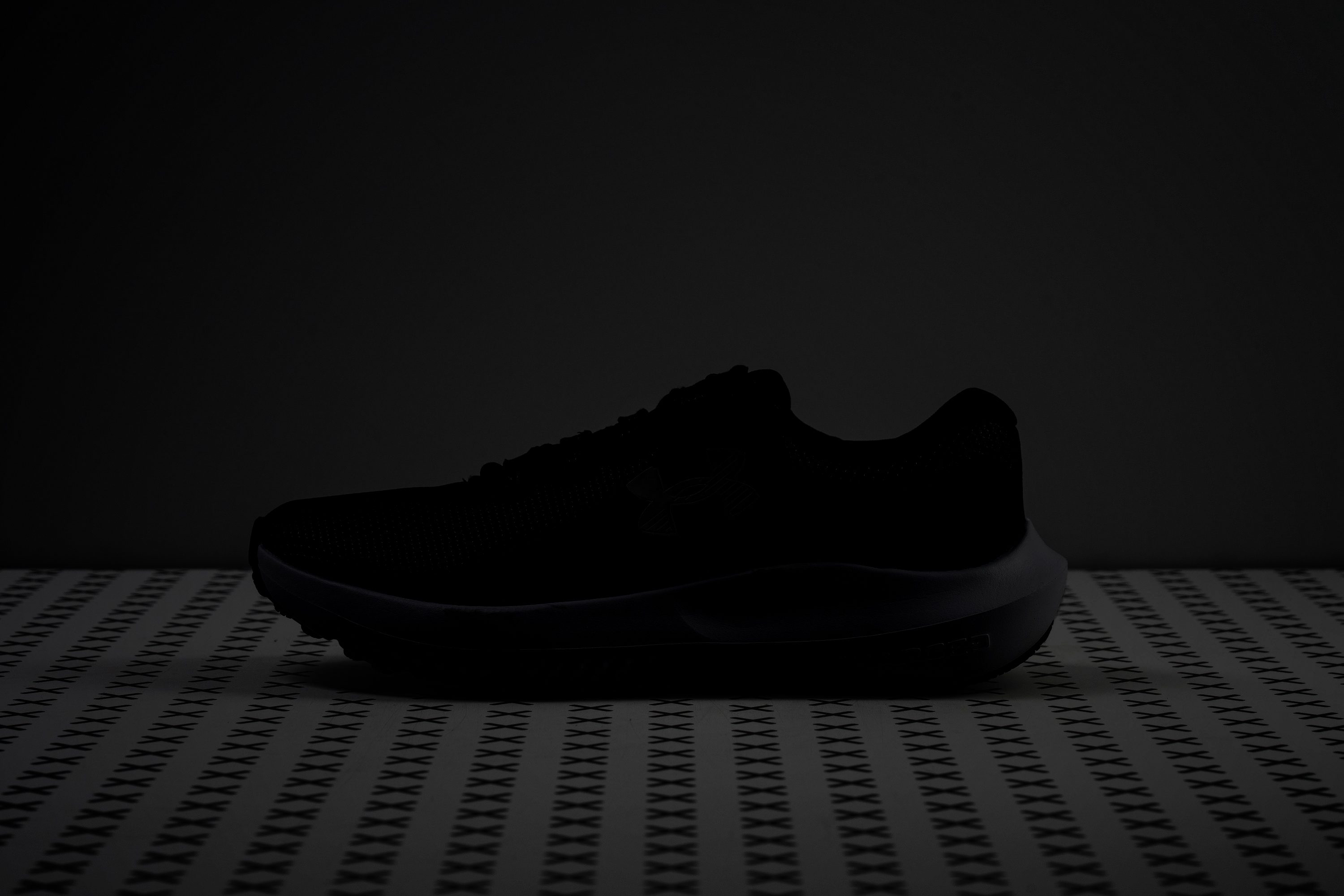
| Surge 4 | No |
Tongue padding
The lacing system on the Surge 4 is unusual for a budget shoe—it skips basic punched eyelets and instead uses stitched fabric loops. However, it lacks an extra top eyelet, limiting advanced heel-lock lacing options.
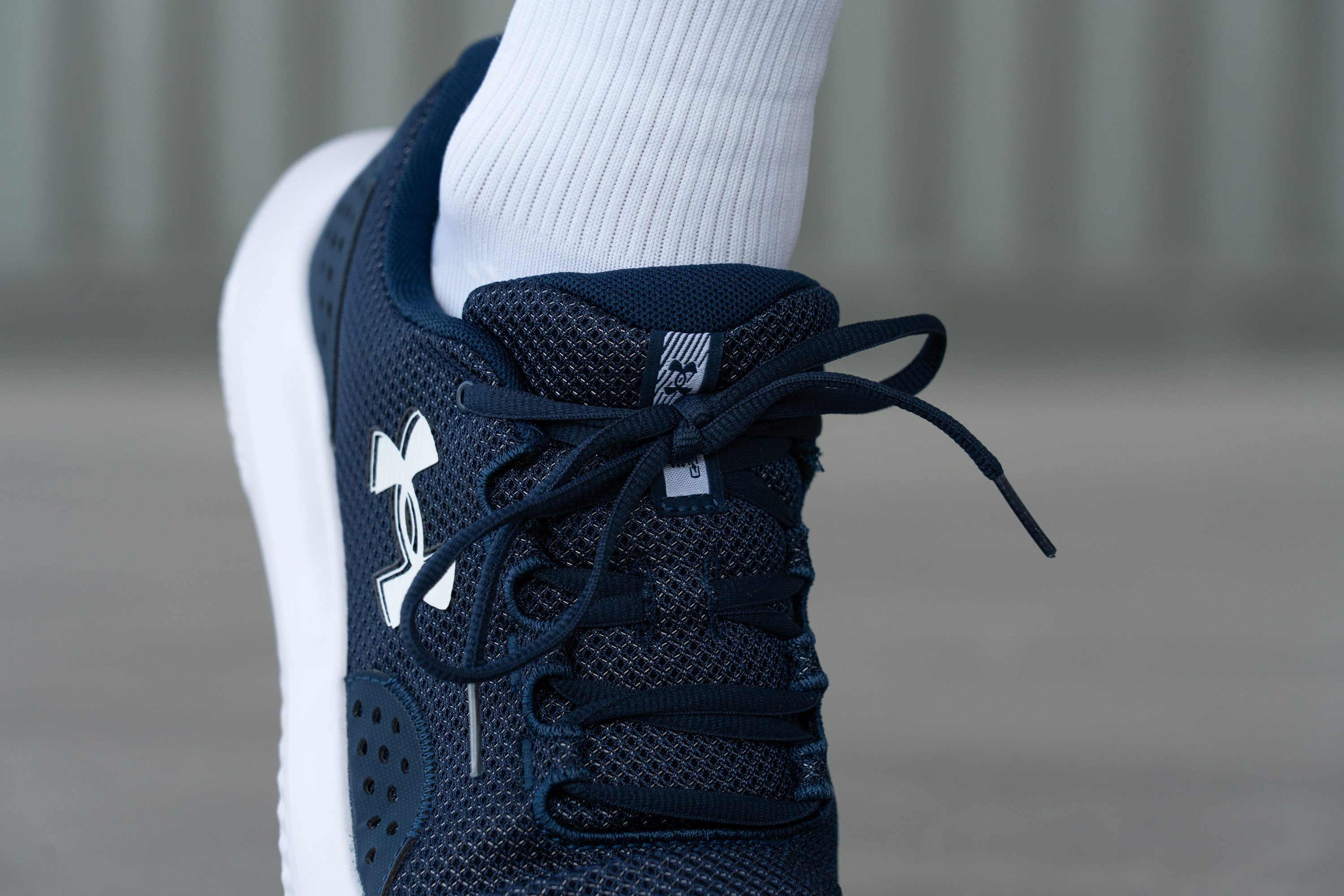
A usual trick from brands on cheap shoes is to add a bunch of foam to the tongue in order to improve comfort by just spending a few cents, and that's what Under Armour did by using a thick 7.8 mm tongue.
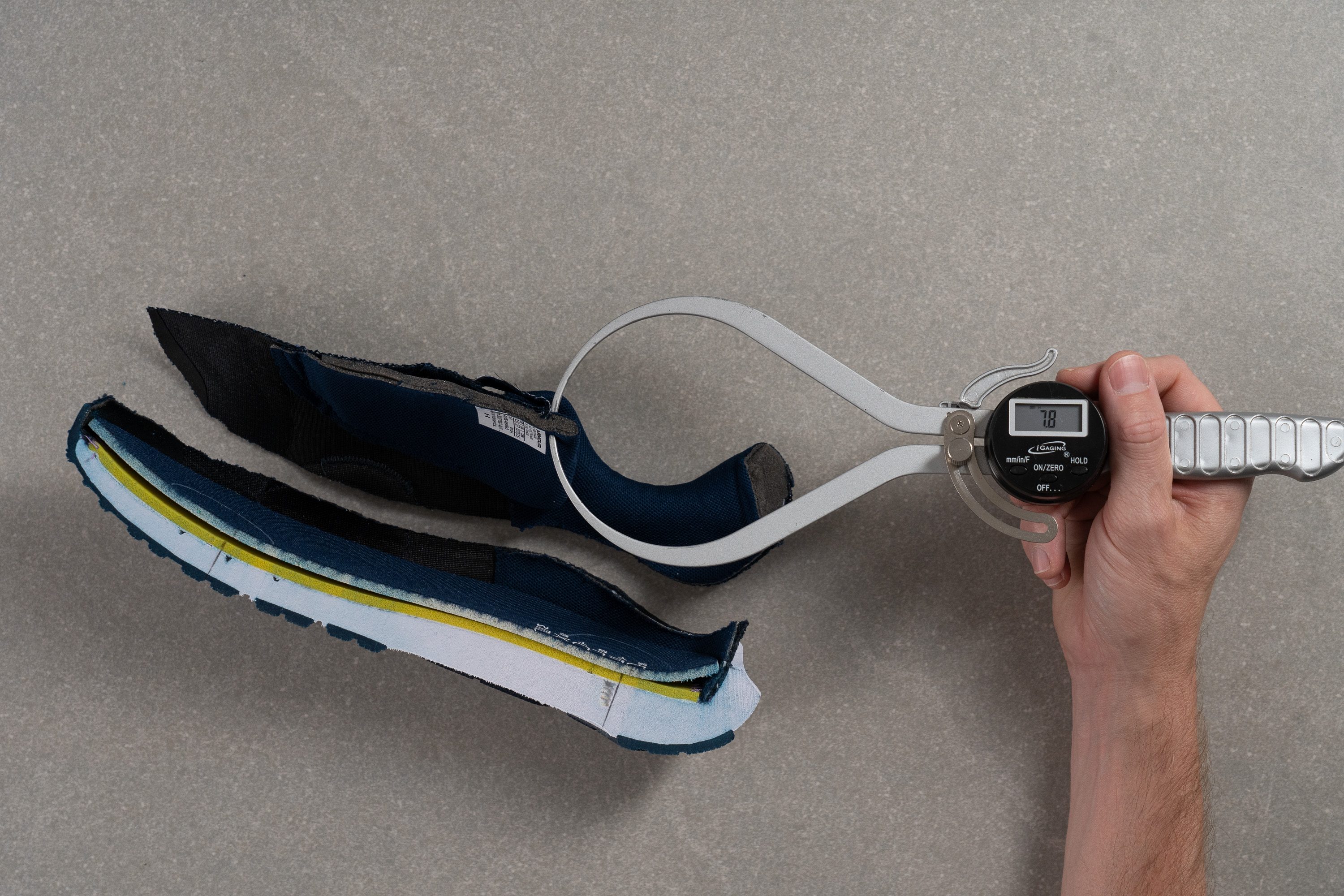
| Surge 4 | 7.8 mm |
| Average | 5.8 mm |
Tongue: gusset type
The tongue isn’t gusseted, so it isn’t attached to the sides and may move slightly. This is completely expected for a budget-friendly running shoe.
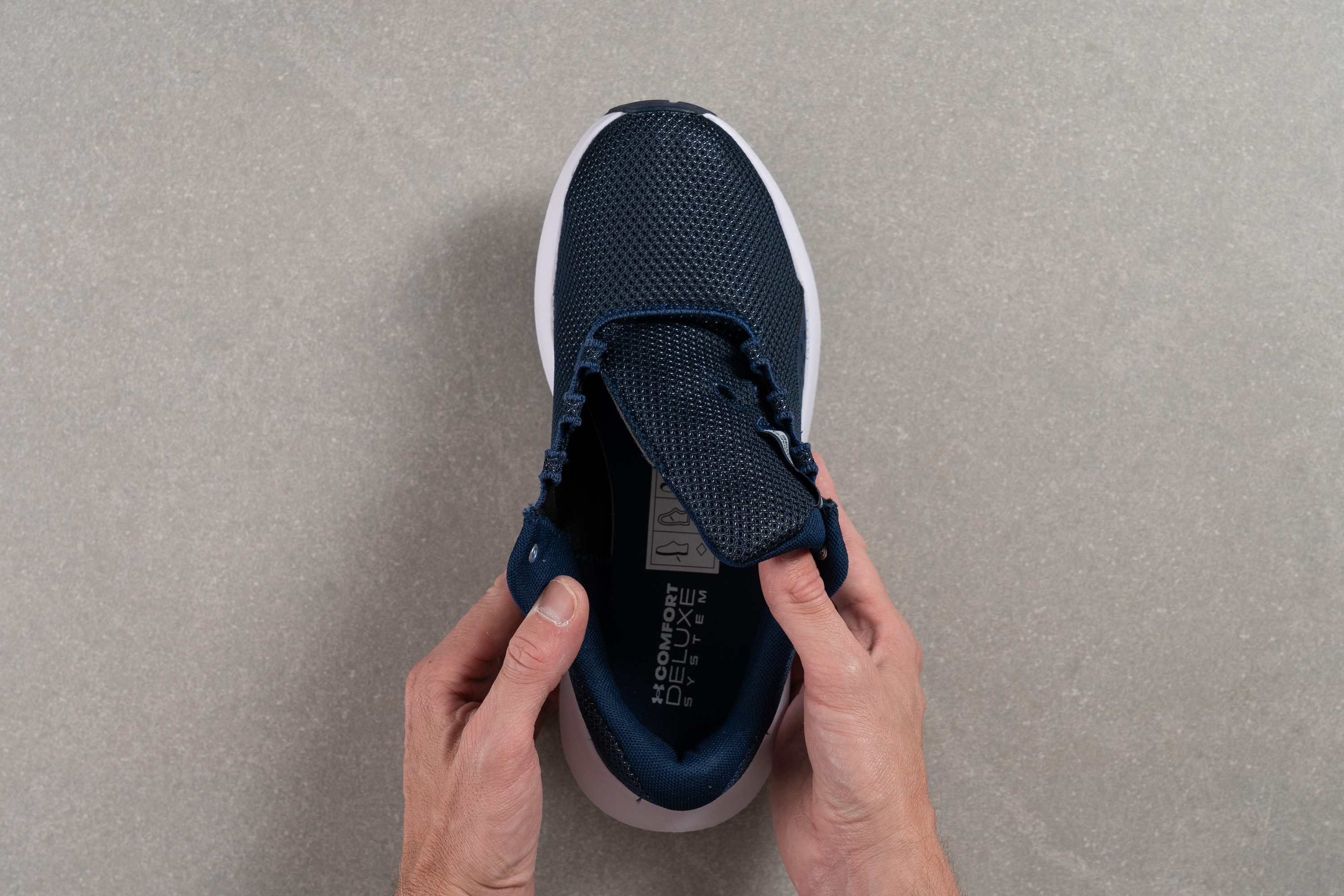
| Surge 4 | None |
Price
The main appeal of the Surge 4 is clearly its low price. Positioned at the very bottom of the price spectrum, it targets runners seeking maximum value while spending as little as possible.
| Surge 4 | $65 |
| Average | $152 |
Heel tab
The minimal design of the Surge 4 extends to the rear, where it completely skips a heel tab.
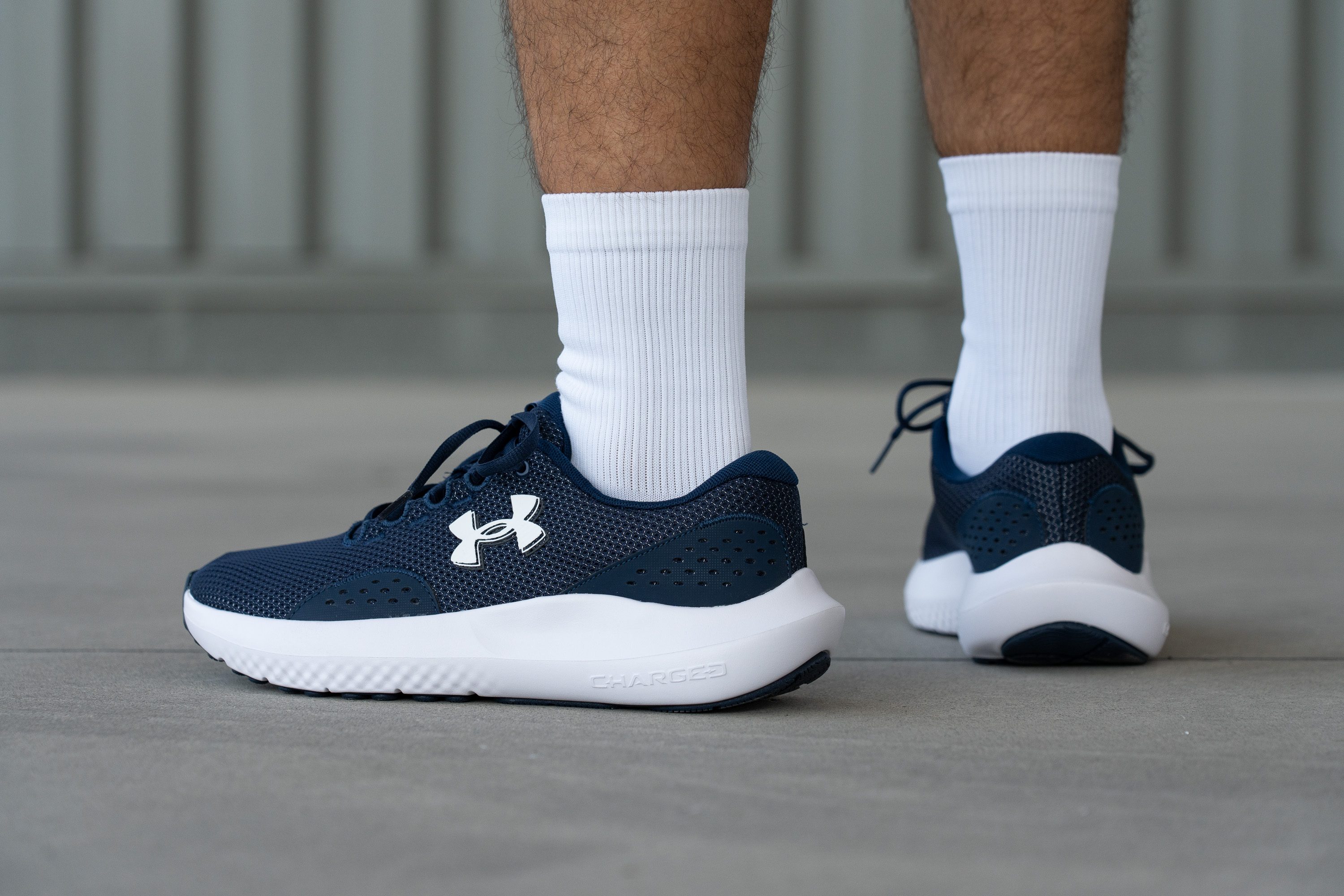
| Surge 4 | None |

